Inbox and Environment news: Issue 494
May 16 - 22, 2021: Issue 494
Proposal To Allow Dogs Offleash On To Mona Vale Beach And Palm Beach
Pittwater Pathways, John Illingsworth: Avalon To Bangalley Coastal Stability Base-Line Flyby
Published May 12, 2021 - 4K slow flyby to assess future geomorphic events (rockfalls, slips) or simply enjoy the scenery and music - slowly. John Barry - Instrumental Suite (Filme Proposta Indecente)
Sydney Wildlife Clinic At Narrabeen CEC
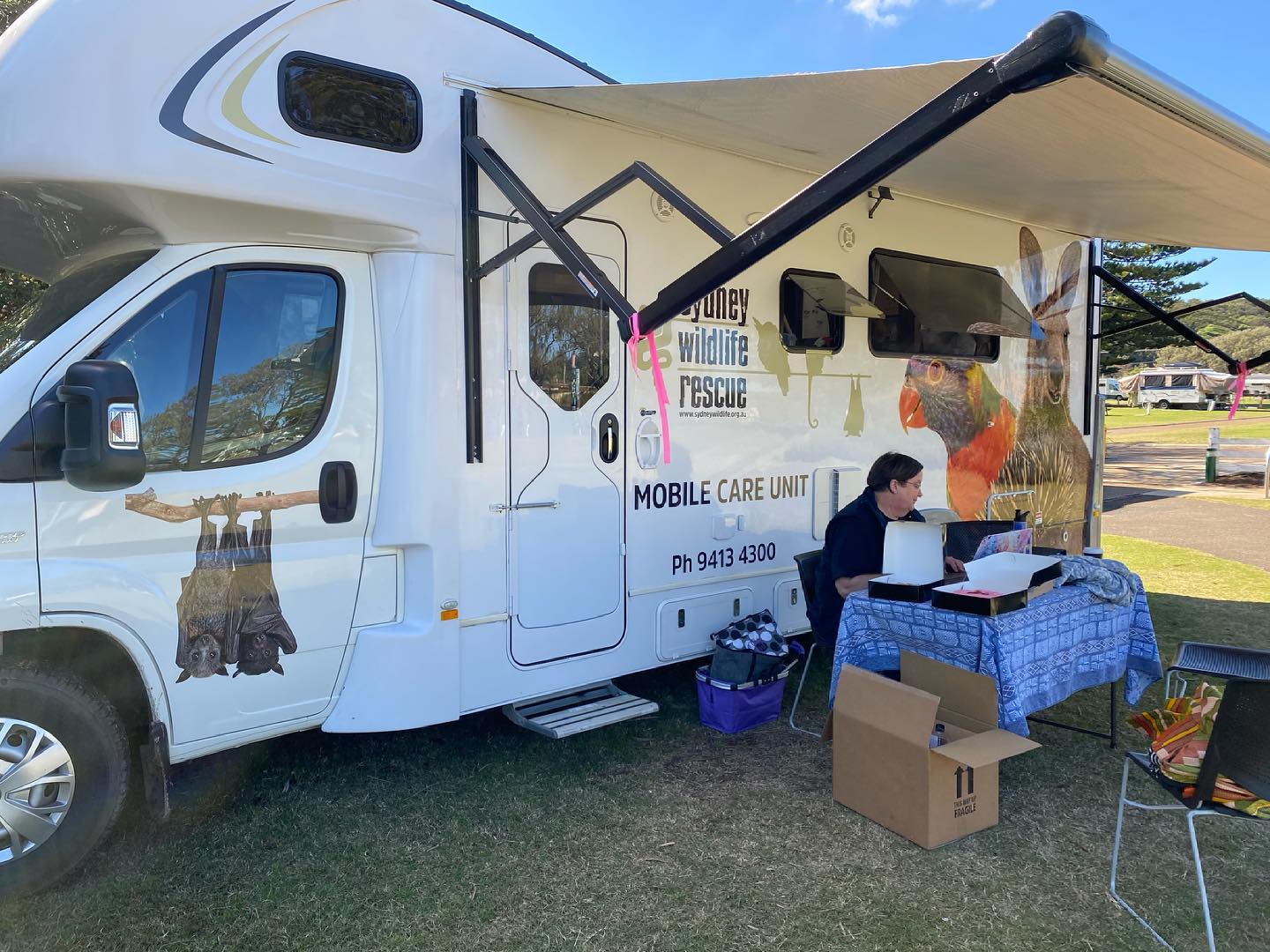
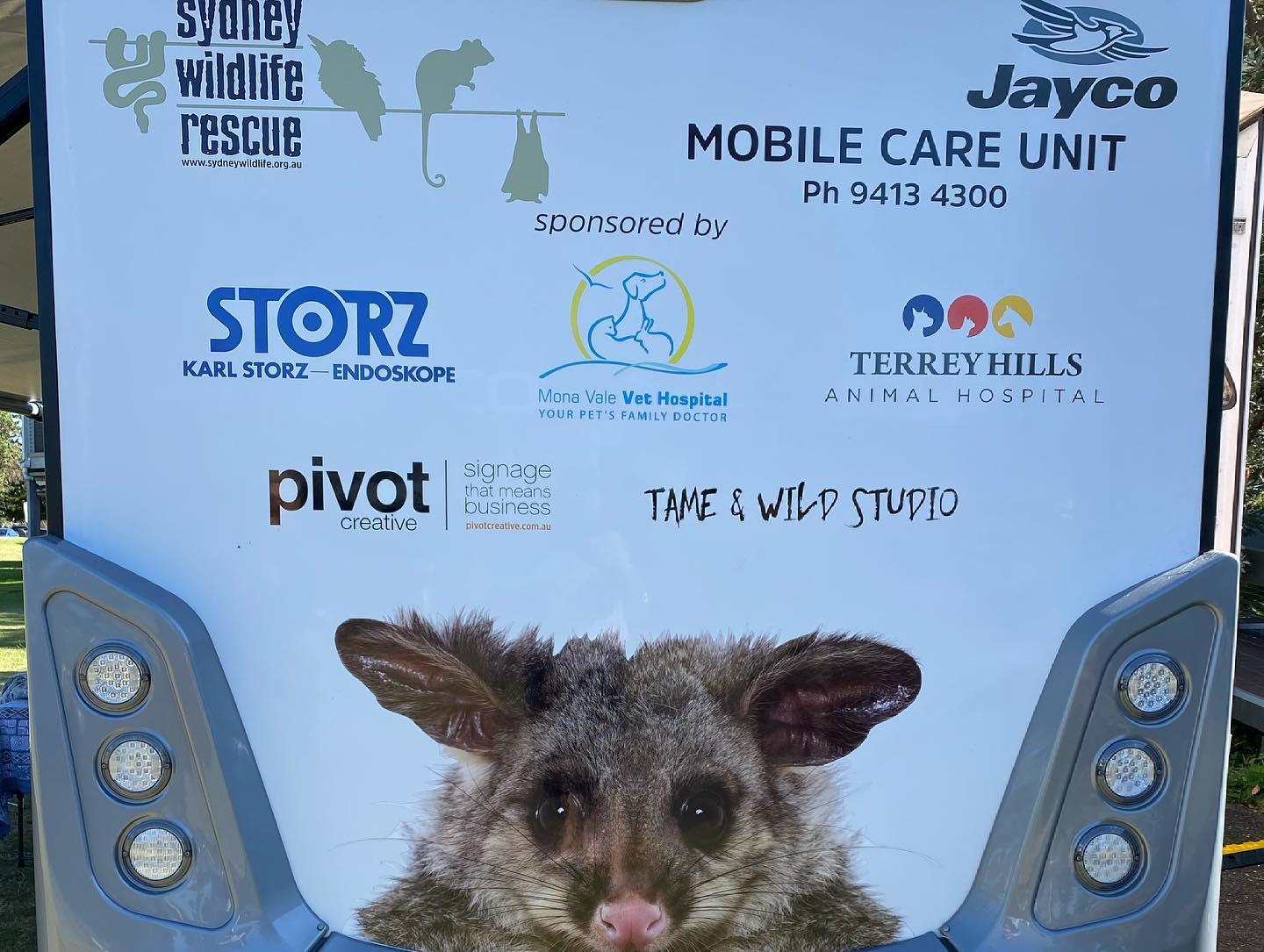
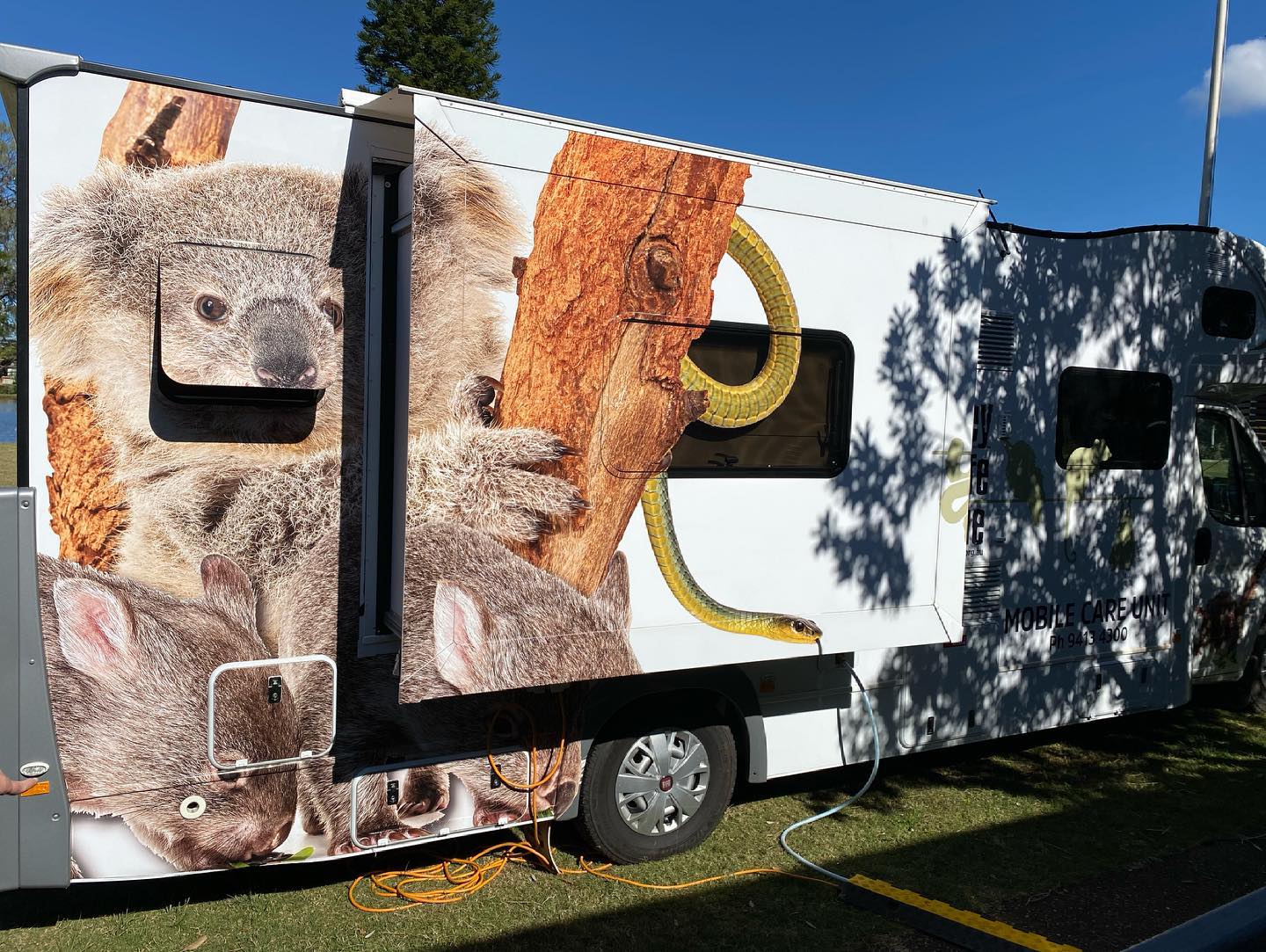
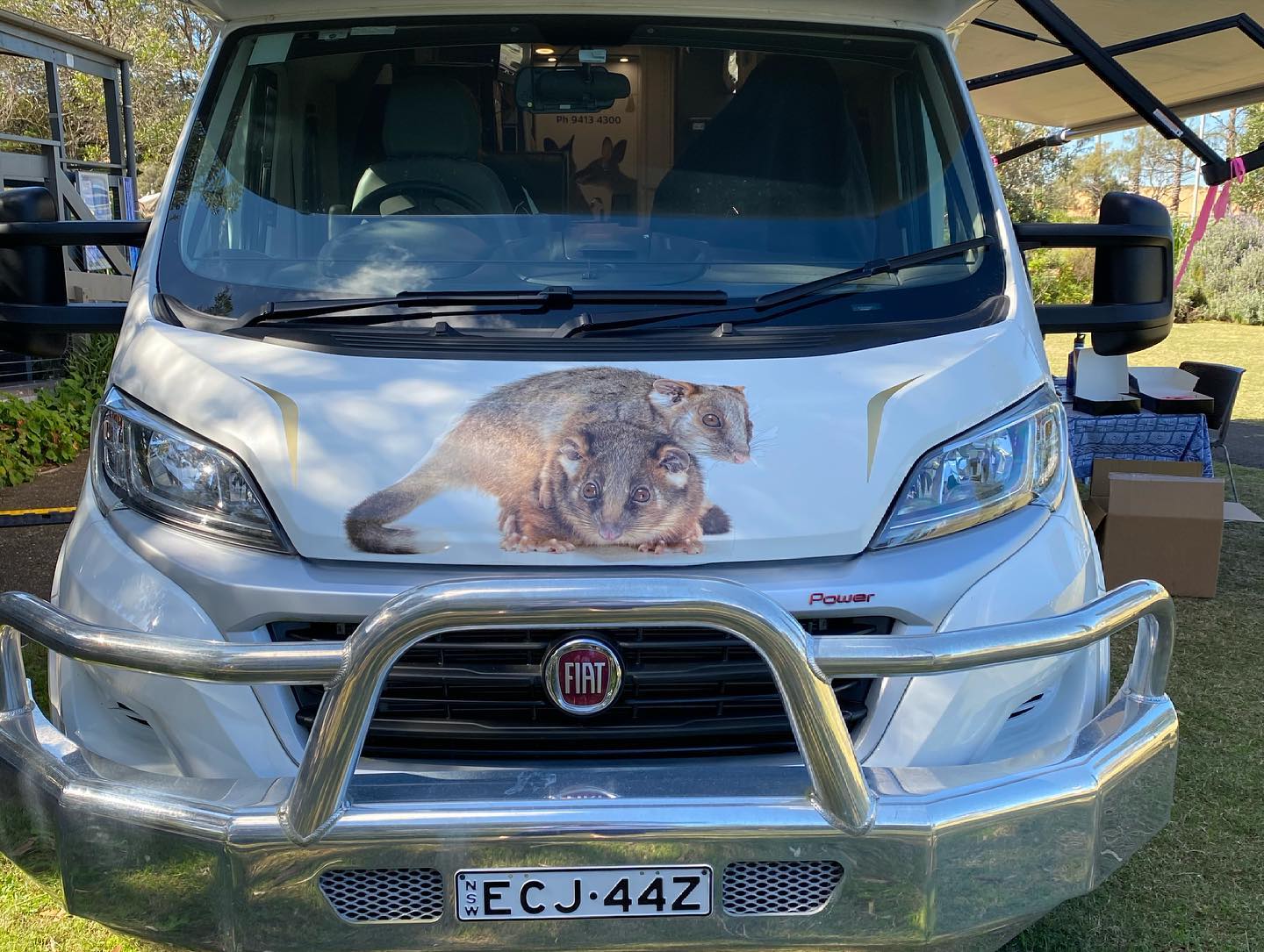
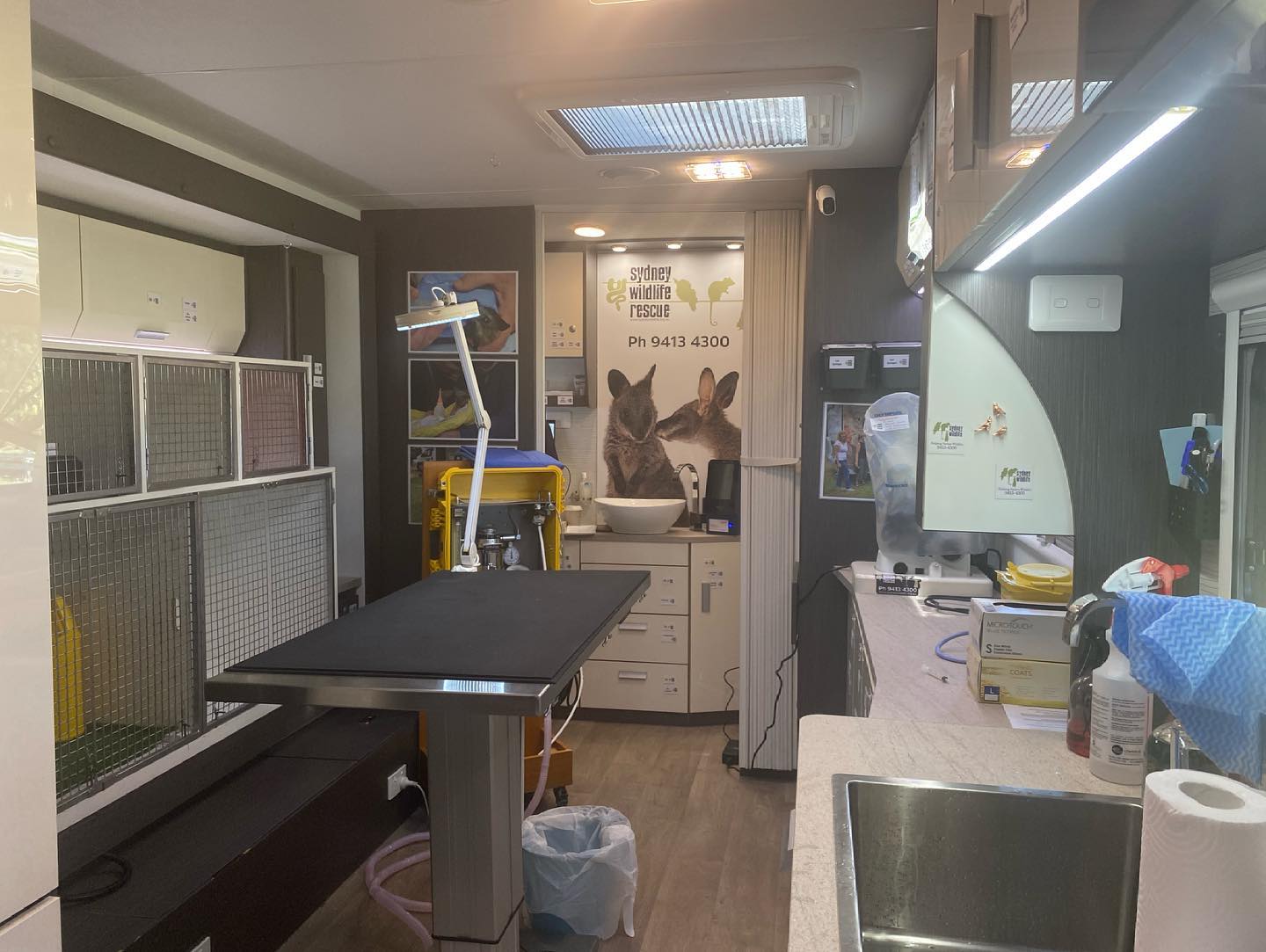
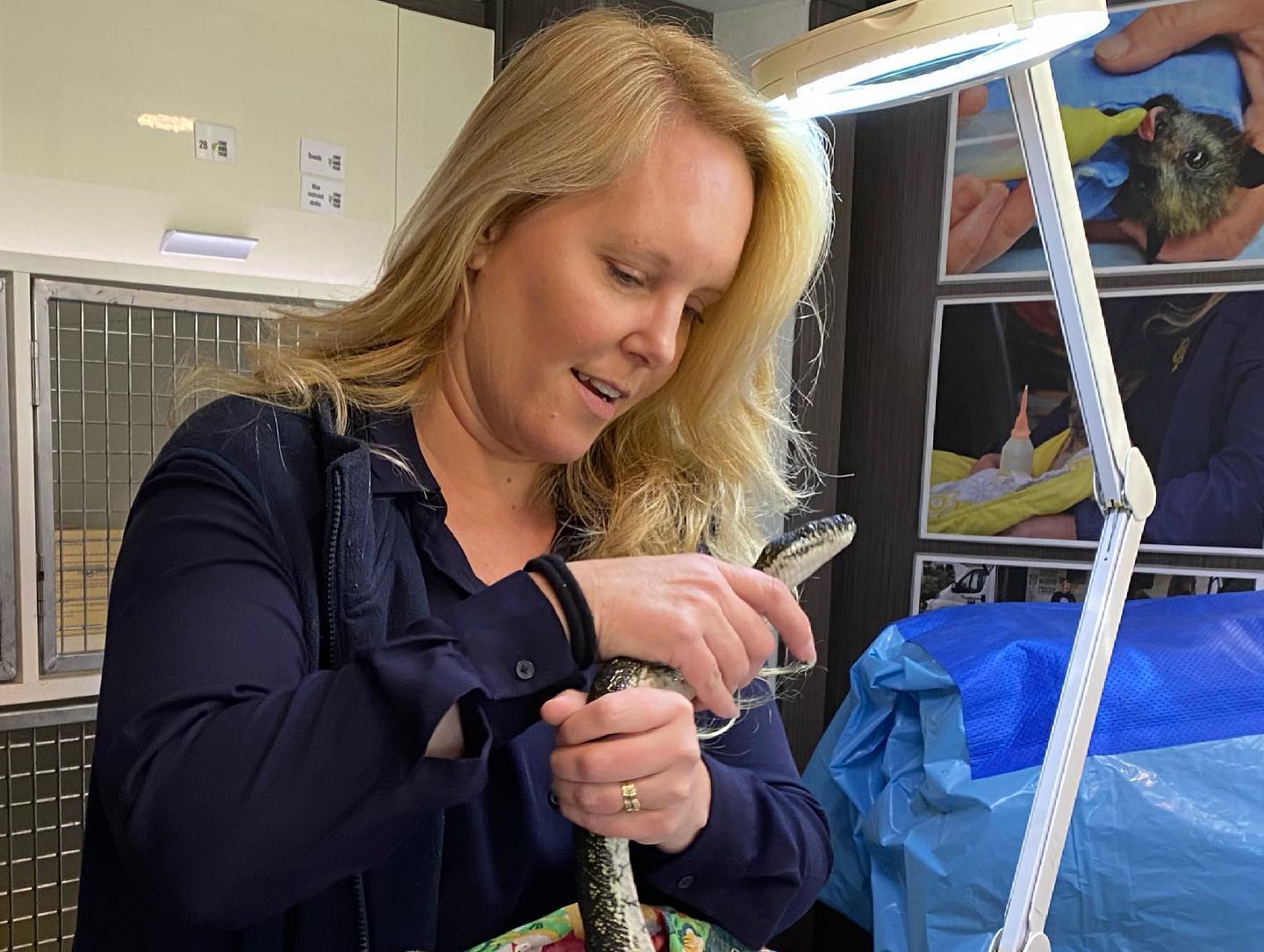
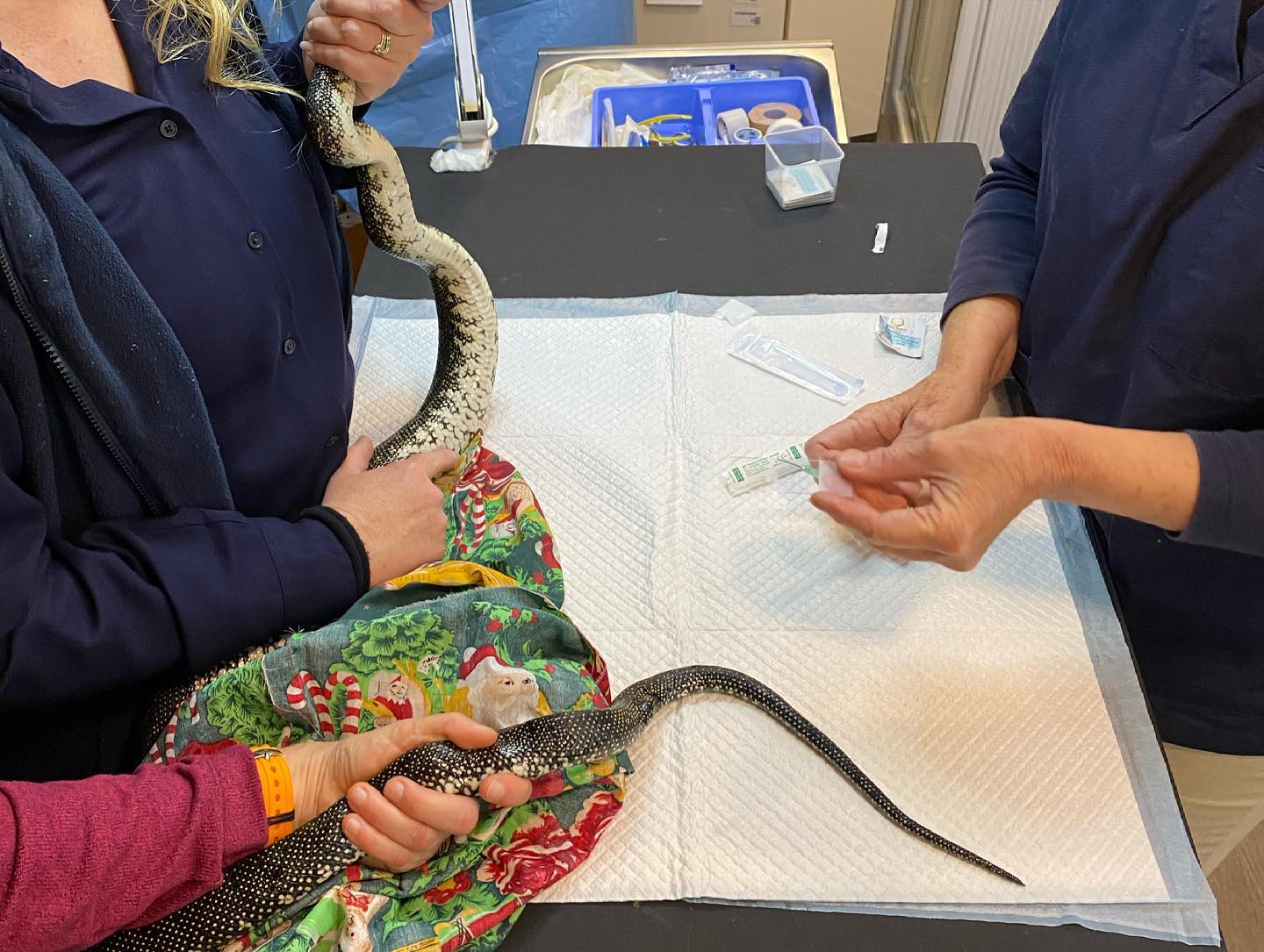
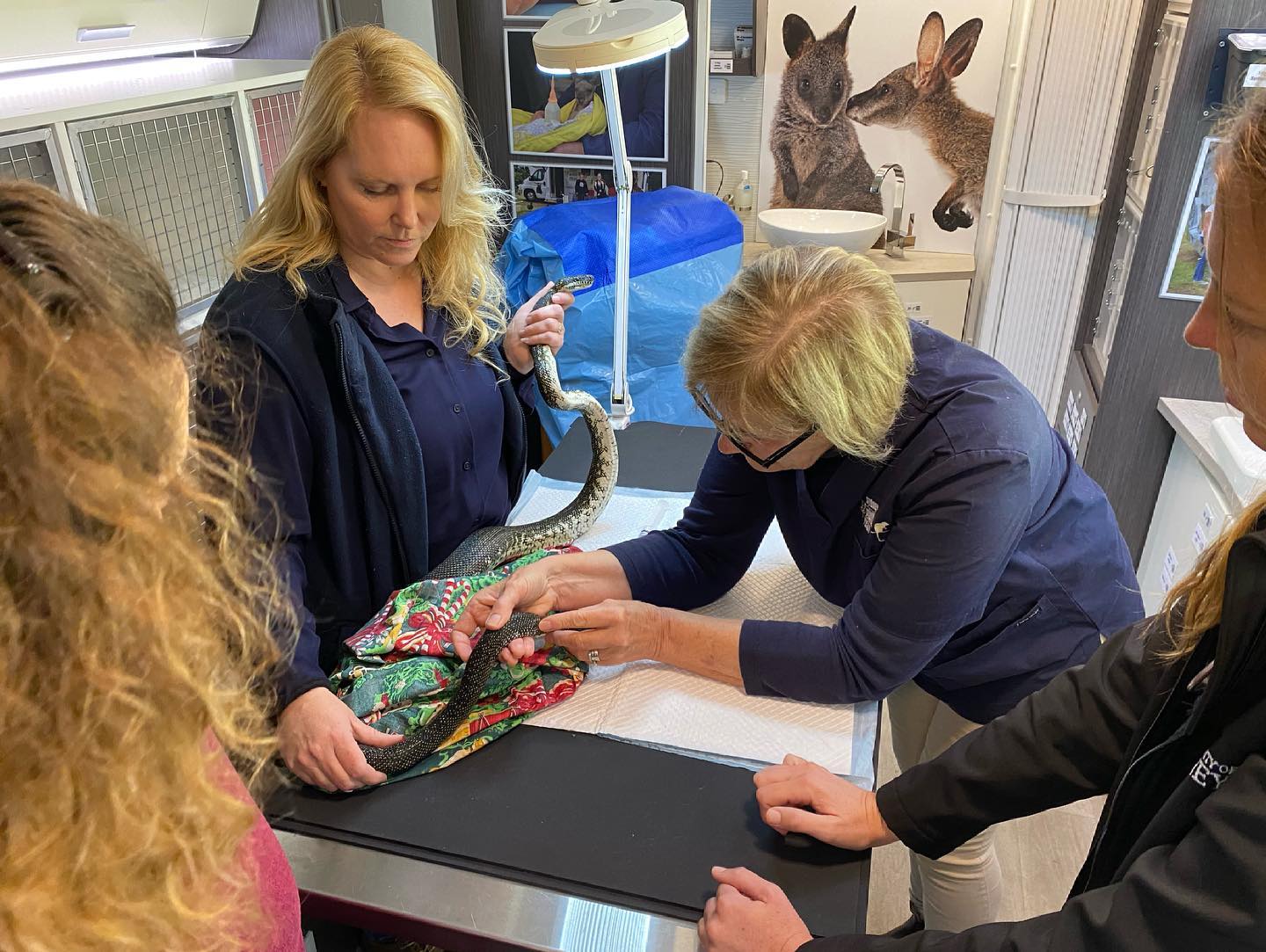
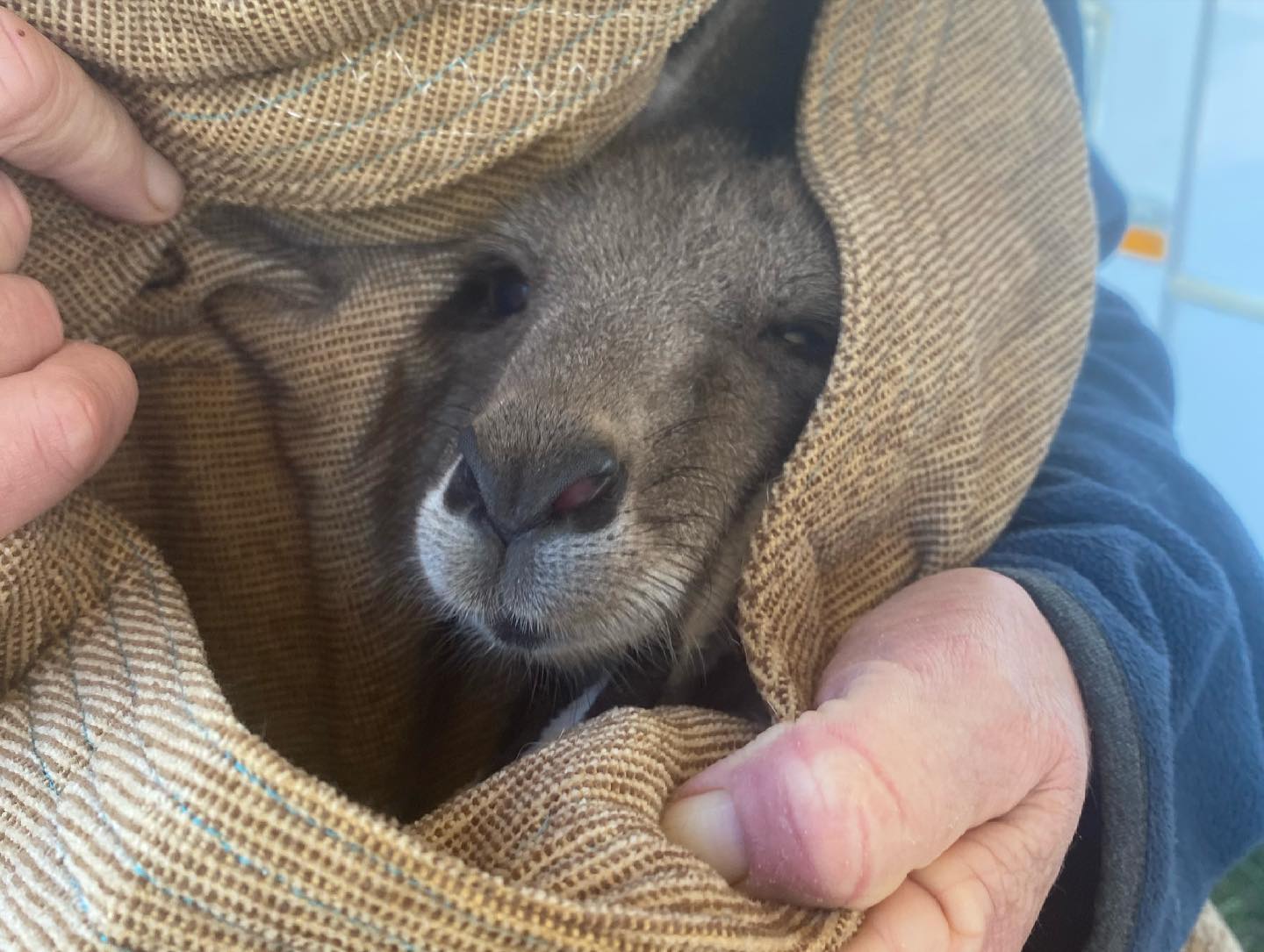
Seal At North Narrabeen
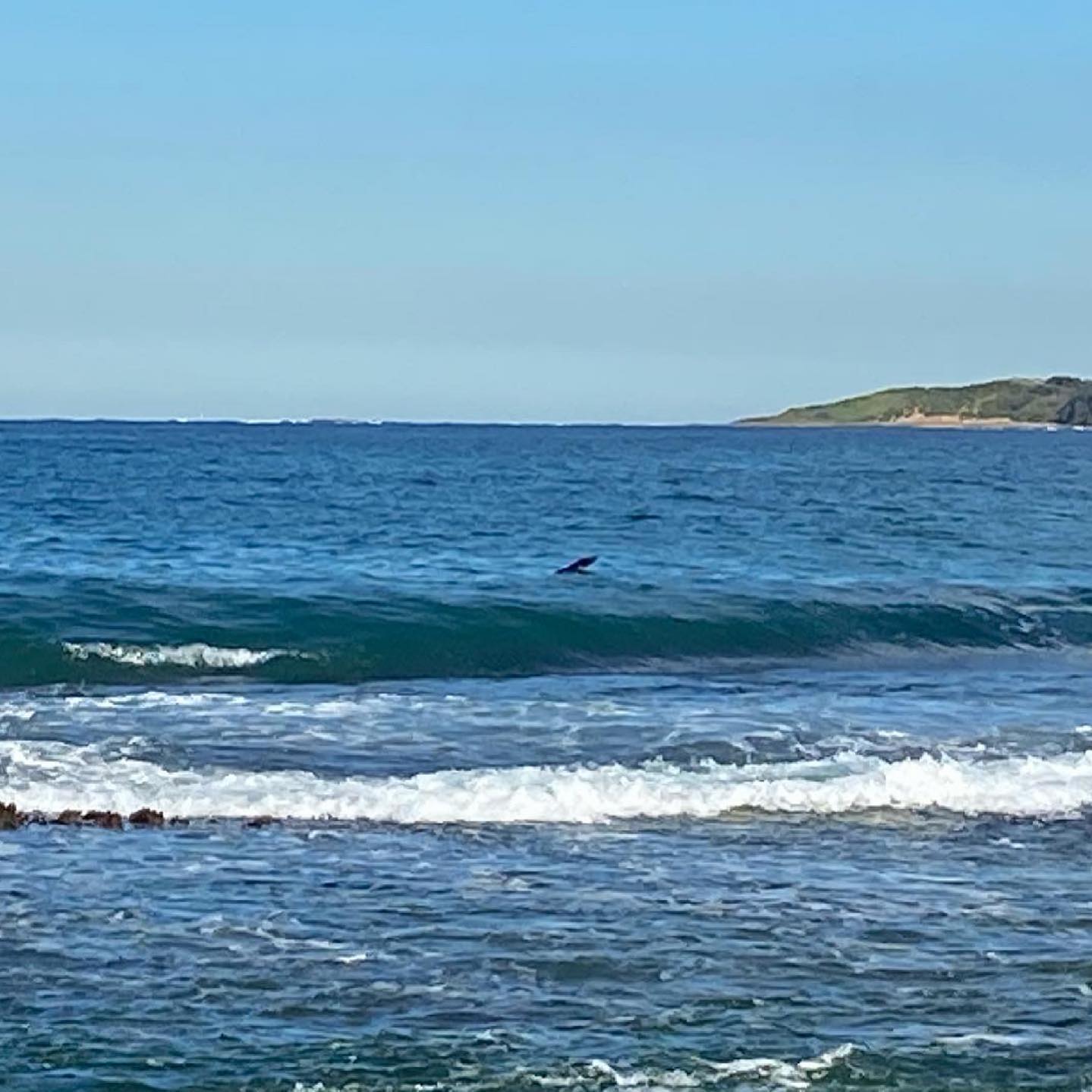
Palm Beach Panorama
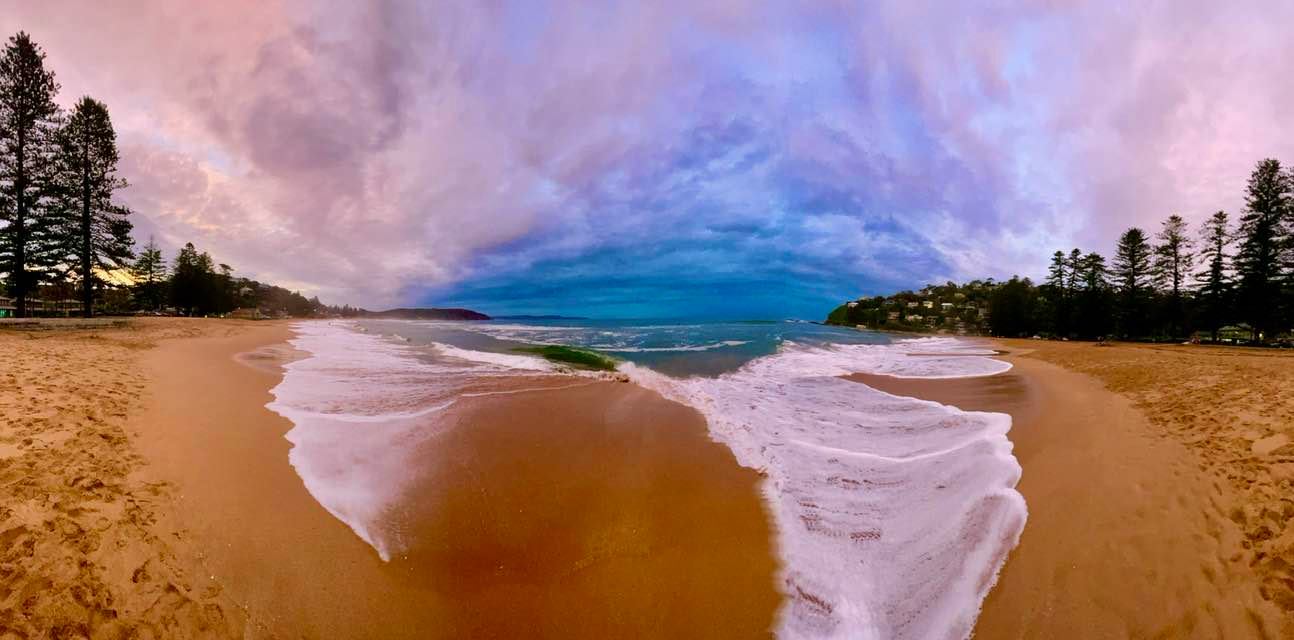
Palm Beach Changing Light
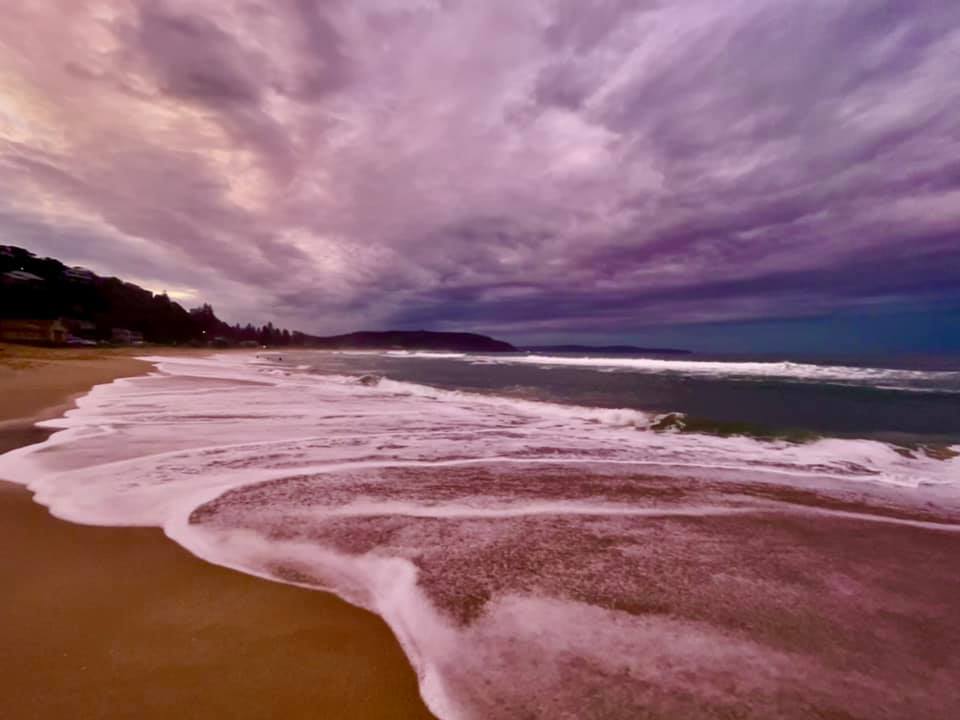
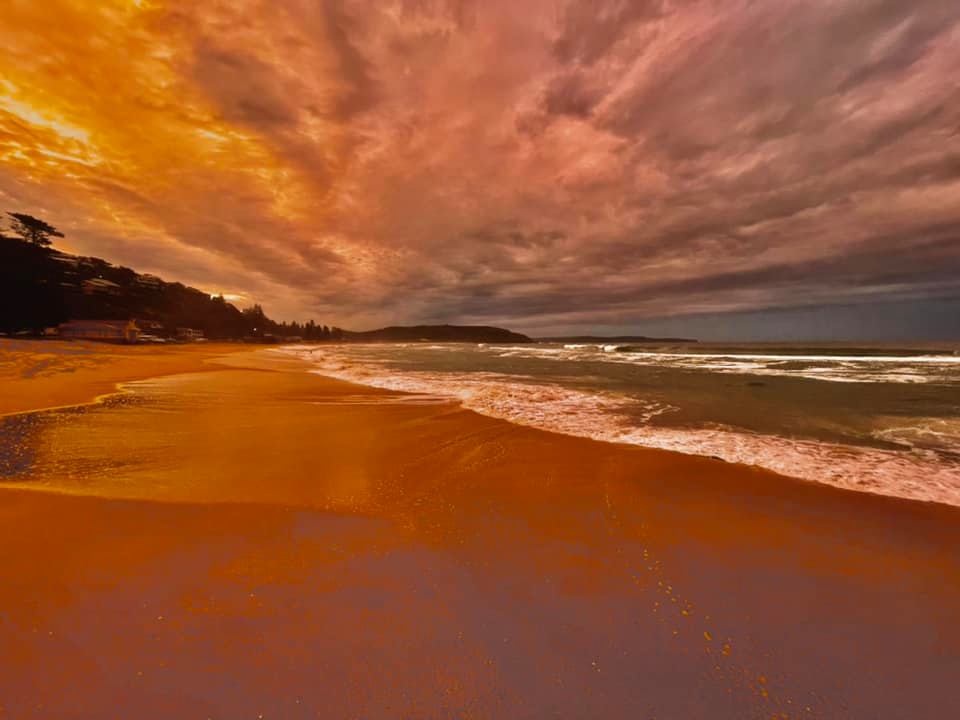
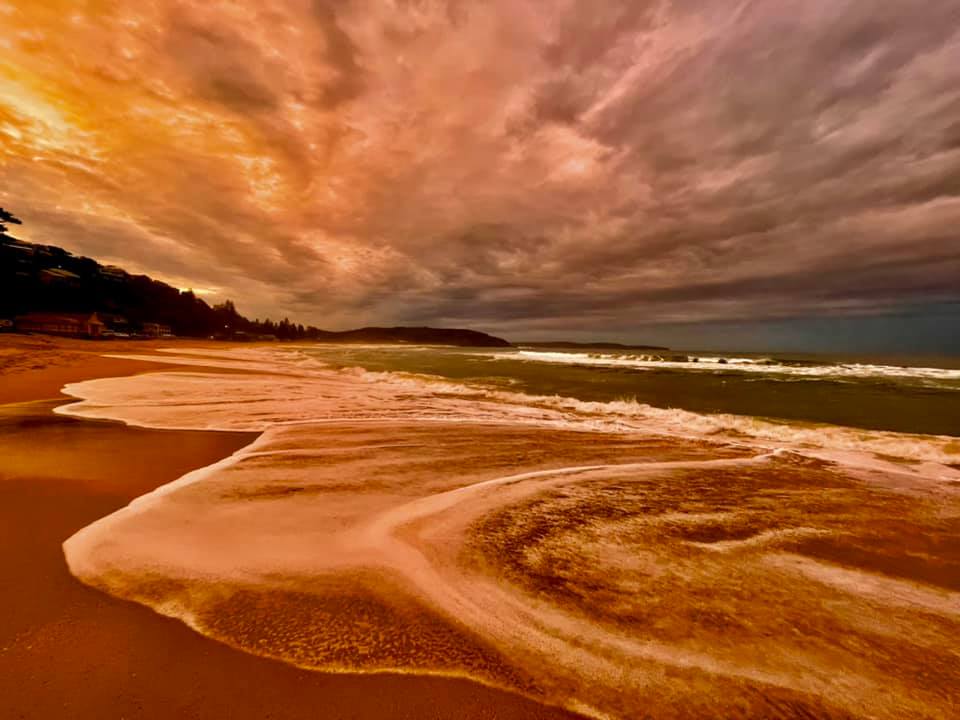
Sydney Wildlife: Registrations For The Next Rescue And Care Course Are Now Open - Commences June 19, 2021
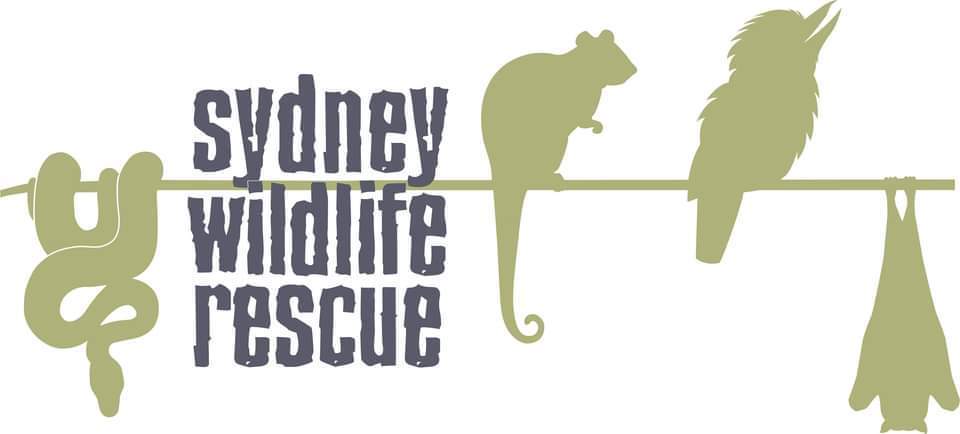
ORRCA News: 2021 Census Day And 2021 Art Comp.
- * Create a cetacean inspired artwork of any description
- * Like the ORRCA FB page and/or Instagram Page
- * Post artwork publicly via your Facebook or Instagram account
- WITH the hashtag #orrcacreatesasplash2021 AND the age
- category they are entering (12 years and under, 13-18 years, 19 years and over)
- * You are able to submit multiple entries
- * Posts needs to be shared publicly so that the ORRCA team can
- see artwork and hashtag
- * All entries must be submitted by 5 June 2021
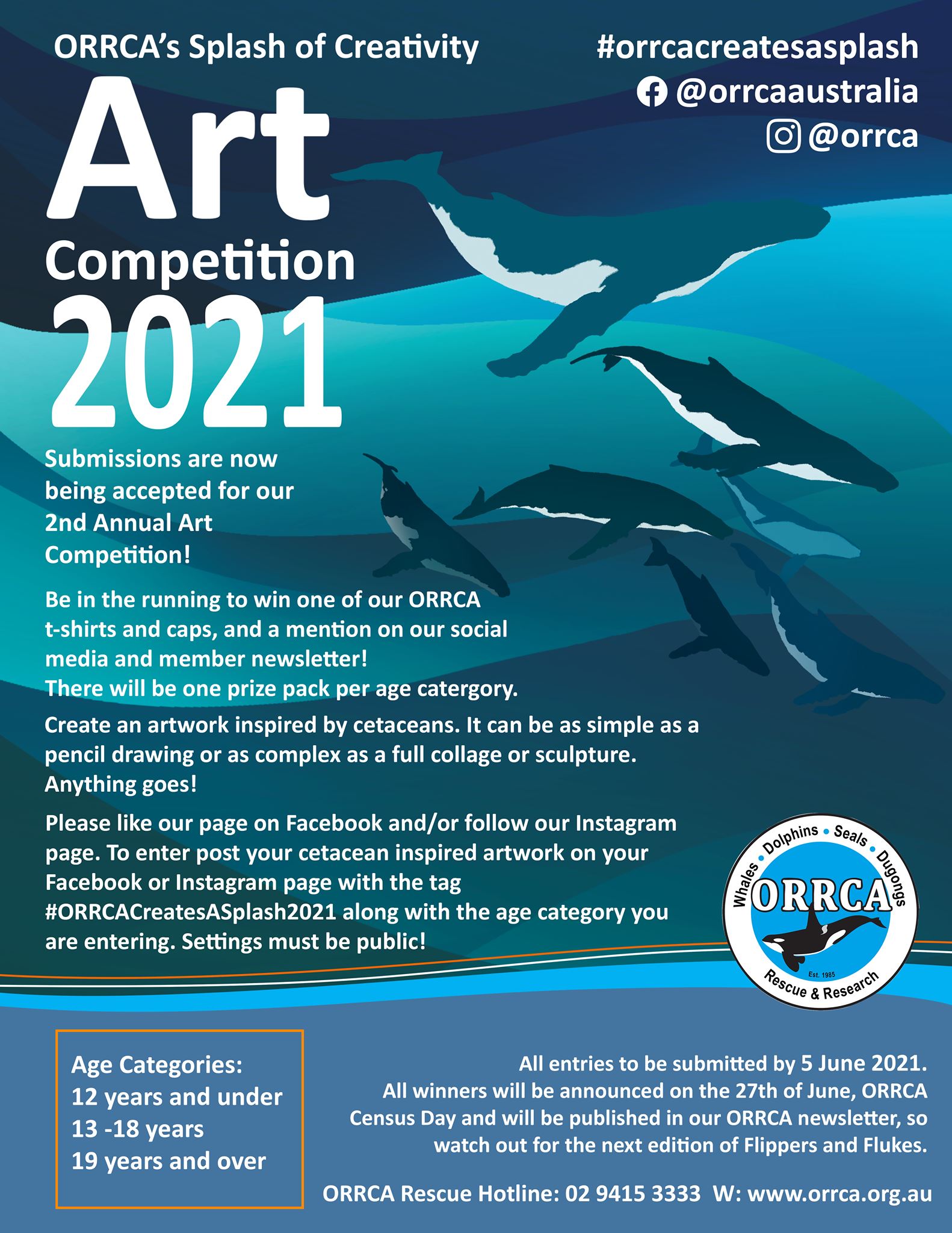
ORRCA Census Day 2021: Sunday June 27 2021
- This is a FREE event for all to join in.
- From sun up to sun down.
- Record all your sightings from your favourite whale watching location using an ORRCA data sheet and sending it into the team at the end of the day.
- Email orrcacensusday@gmail.com for all the details as they unfold.
Newport Community Garden Autumn Harvest
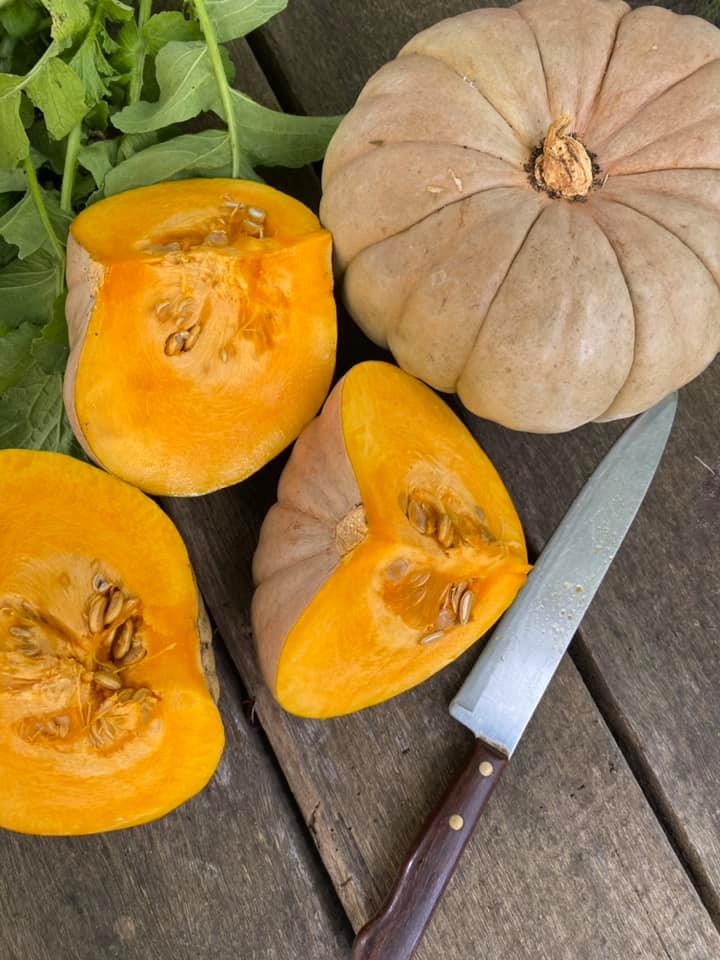
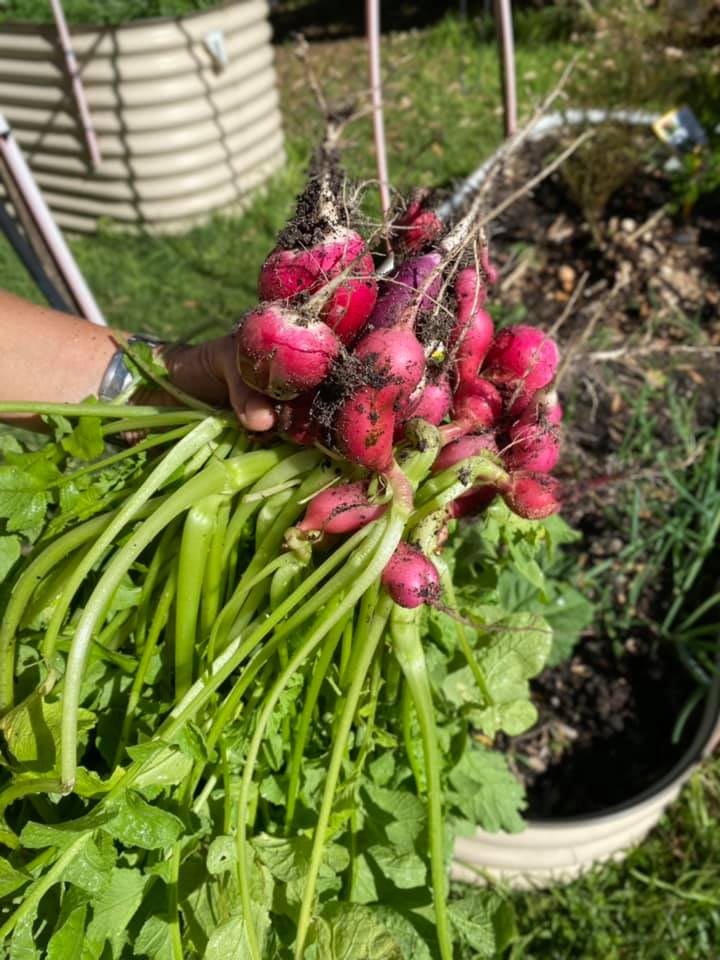
North Head National Park Uprgrade: Give Your Feedback
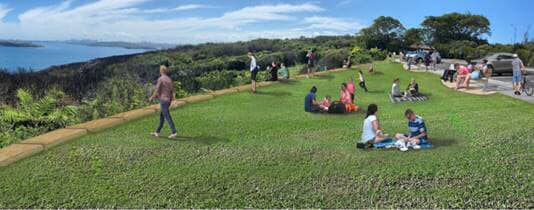 The National Parks and Wildlife Service is pleased to release the concept plans for the North Head Scenic Area upgrade.
The National Parks and Wildlife Service is pleased to release the concept plans for the North Head Scenic Area upgrade.- - reconfiguring the car parks to provide more accessible parking spaces and overflow parking.
- · extended landscaped space for visitors to enjoy views across the harbour.
- · installation of pedestrian crossings and a pedestrian path to improve safety, access and circulation.
- · installation of a new bus stop to the east of the Bella Vista Café.
- · improvements to the entry of the Fairfax Walking Track (currently closed).
Friends Of Narrabeen Lagoon Catchment: Next Forum
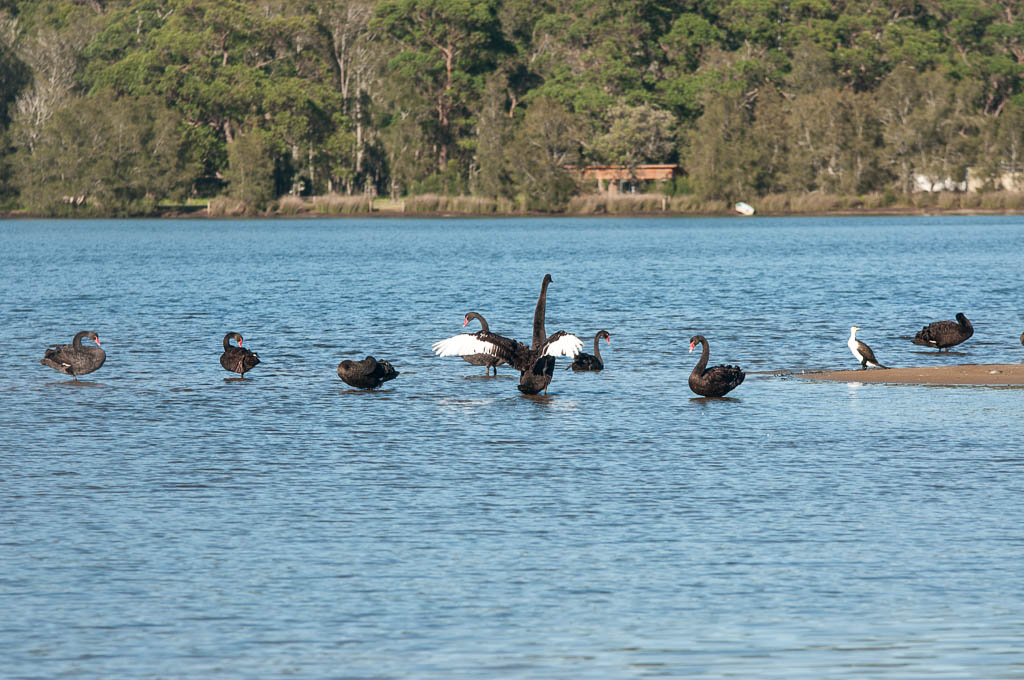
Avalon Community Garden
Avalon Community Garden’s primary purpose is to foster, encourage and facilitate community gardening in Pittwater on a not-for-profit basis.
The garden was started in 2010 by a group of locals who worked in conjunction with the support of Barrenjoey High School to develop a space that could be used by the local community, to grow
vegetables, herbs, plants and flowers, and practice sustainable gardening techniques to benefit its members and the community overall.
The garden has been very successful and has grown and developed since its inception, in terms of its footprint, infrastructure, variety of produce and diversity of members. The garden welcomes new members all year round. Levels of contribution range from multiple times a week, to once a month. Your contribution is always welcome, and it is acknowledged people will have varying levels of commitment.
We encourage you to join and start enjoying the following benefits associated with community gardening:
They provide benefits for individuals and for the community as a whole. Community gardens provide education on gardening, recycling and sustainable use of natural resources.
They develop community connections and provide a means of engaging youth, children, the elderly and the disabled and otherwise marginalised individuals in mutually enjoyable and rewarding activities, thus helping to develop more functional and resilient communities.
People involved in community gardens say they improve wellbeing by increasing physical activity and reducing stress, providing opportunities to interact meaningfully with new friends, give time for relaxation and reflection as well as an opportunity to improve their interconnectedness with nature.
To get involved take a look around the site, join the Facebook group and come along and visit on a Sunday morning between 10 and 12 at the garden within Barrenjoey High School on Tasman Road, North Avalon.
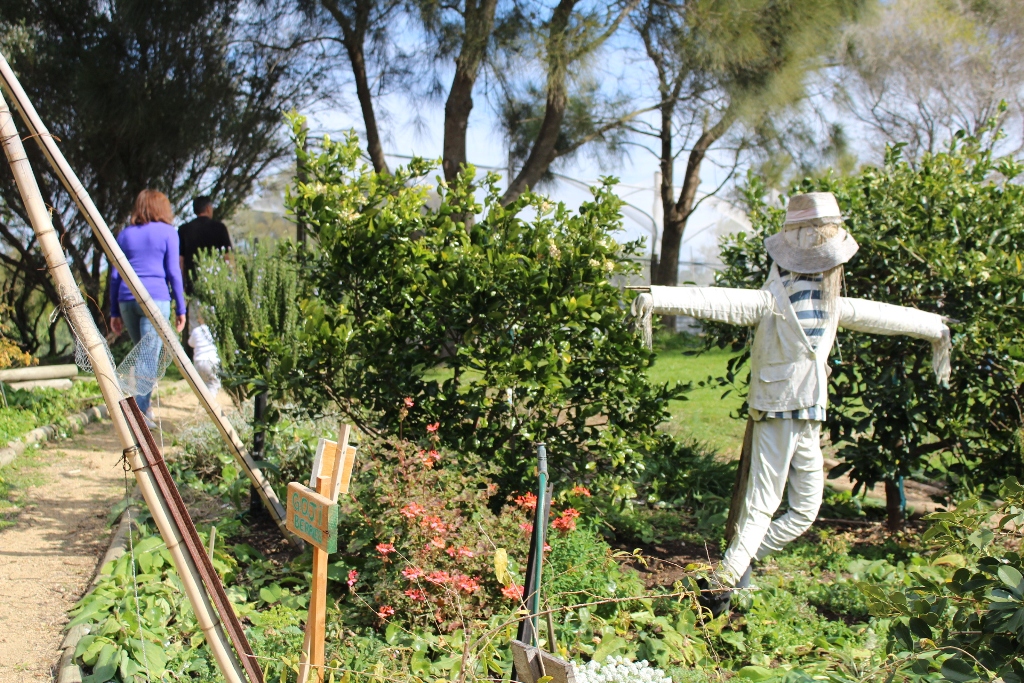
Bushfire Conference June 2021
Another Local Tawny Frogmouth Road Death: Bird Strike Project
Tuesday May 4, 2021
A resident of Elanora tried to save a Tawny Frogmouth that had been hit by a car and left on the road earlier this week. The bird, with differing size in pupils, indicating head trauma with associated neurological issues, also had a badly broken wing and unfortunately had to be euthanised after the gentleman who found it, cycling, took it to a local vet.
The loss is a reminder that with increased housing targets, poor transport options and more people driving cars on these roads, our local wildlife is at risk if commuters continue to speed in these areas. If you want to keep seeing these other residents the message is - slow down in these poorly lit road channels, particularly along Powder Works road which seems to be claiming more wildlife than other thoroughfares at present.
Owls and nightjars frequent roads to hunt easily obtainable rodents that feed next to the road. Also busy roads fragmenting owl habitat can be also a mortality factor, especially for juveniles either searching for an easy prey, or dispersing from a nesting site.
Nocturnal bird habitat is increasingly at risk from rapidly expanding urbanisation and development pressure. Deforestation and habitat fragmentation continues to escalate in both urban and rural areas in Australia, with only 16% of Australia now forested and the 2019/2020 bushfires have significantly impacted the distribution of many of our nocturnal birds. In urban areas, large hollow-bearing trees, which are used annually by most nocturnal birds to nest, are often removed for safety and to reduce risk to infrastructure. For many nocturnal birds these old, hollow-bearing trees take several hundred years to develop and are now critical habitat in urban environments - further, there is fierce competition from native and introduced animals for the remaining hollows. Whilst retaining hollow-bearing trees is essential for many owl species, understorey vegetation is important for many other night birds. Grass owls nest on the ground in open grassy areas under tussocks or sedges, whilst Nightjars often nest in scrapes on the ground amongst leaf litter.
The urban environment does impact nocturnal species differently. Some, such as the Powerful Owl seem to be more common in our cities now. These owls can do well in forested urban green spaces due to a ready source of prey (e.g. possums, birds and fruit bats), however increasing rates of development pressure are threatening key habitat features like tree hollows and roosts and collisions with cars and windows are significantly impacting the population of many nocturnal species. If we wish to keep owls and other nocturnal birds in our urban neighbourhoods, targeted management practices that work to retain or rebuild key habitat features and mitigate threats are essential.
Owls can be killed by ingesting poisoned rodents. Insectivorous nocturnal birds, such as Frogmouths and Nightjars are also highly susceptible to secondary poisoning, particularly from termiticides. To avoid secondary poisoning pest control needs to use poisons that have no secondary transfer, and that are single dose rather than multi dose.
Bird Strike Project: BirdLife Australia
Up to one billion birds strike glass in North America each year, and millions more hit windows each year around the globe. This is an enormous and heart-breaking number - although we don't know much about bird strike in Australia, the loss of birds through car strikes and glass strikes is happening here on a daily basis. With your help, BirdLife Australia can learn more about where and why it's happening, and work together to prevent one of the highest causes of bird injury and mortality.
The Bird Strike Project aims to provide a single management point for our partners in data collection, solutions, and eventually go beyond simple solutions and work across industry to get bird-friendly technology into buildings and other infrastructure. Bird strike has also been assessed as a major threat to Australia’s urban bird communities by a panel of experts during stakeholder workshops for BirdLife Australia’s Urban Bird Conservation Action Plan (UBCAP).
How can you get involved?
You can report any bird window/car strikes using our online survey at https://www.surveymonkey.com/r/aussiebirdstrike
What do we know about window strike?
- Migratory species are some of the most vulnerable to window collisions
- Collisions are more frequent during autumn migrations and spring breeding seasons
- Species who exhibit fast, agile and direct flying patterns are more susceptible to window collisions
- Flocking species are less likely to collide with windows
- Large areas of transparent or reflective glass increased the risk of window collisions
- Windows that reflect sky or vegetation may appear as an available flight path or habitat and can cause a bird to collide with a window
- Individual buildings can have their own unique set of characteristics that influence the risk of window collisions
- Collisions are more of a risk in older neighbourhoods with complex vegetation
- Landscaping features such as birdbaths, birdfeeders, resource-rich trees and water features bring birds closer to windows and increase the risk of a collision.
- Low-rise buildings close to urban greenspaces are hotspots for window collisions
- Suburban and rural areas have a higher collision risk
How can you make your windows safe for birds?
Download our brochure below to undertake the strike risk checklist and read about ways to strike proof your home and office
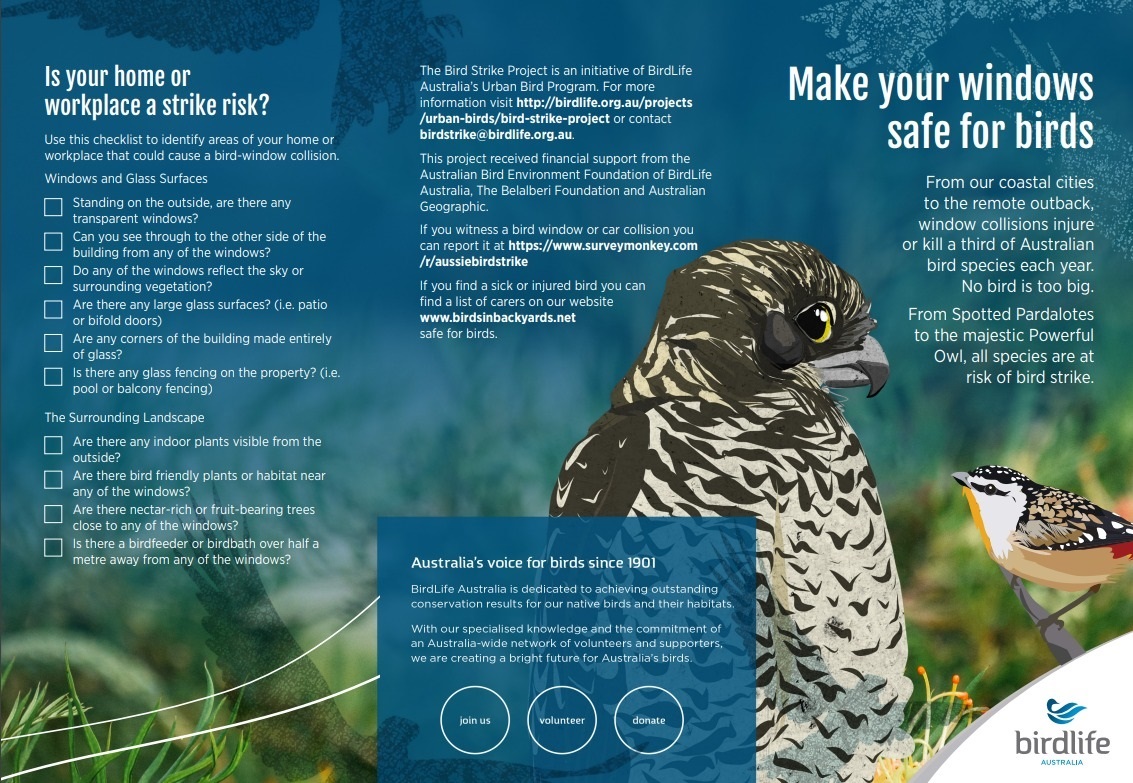
.jpg?timestamp=1620168775147)
What should you do if you find an injured bird?
Please see our FAQ on sick or injured birds, including contacts for wildlife rescue groups around the country or download a pdf:
PDF - What should you do if you find a sick or injured bird?
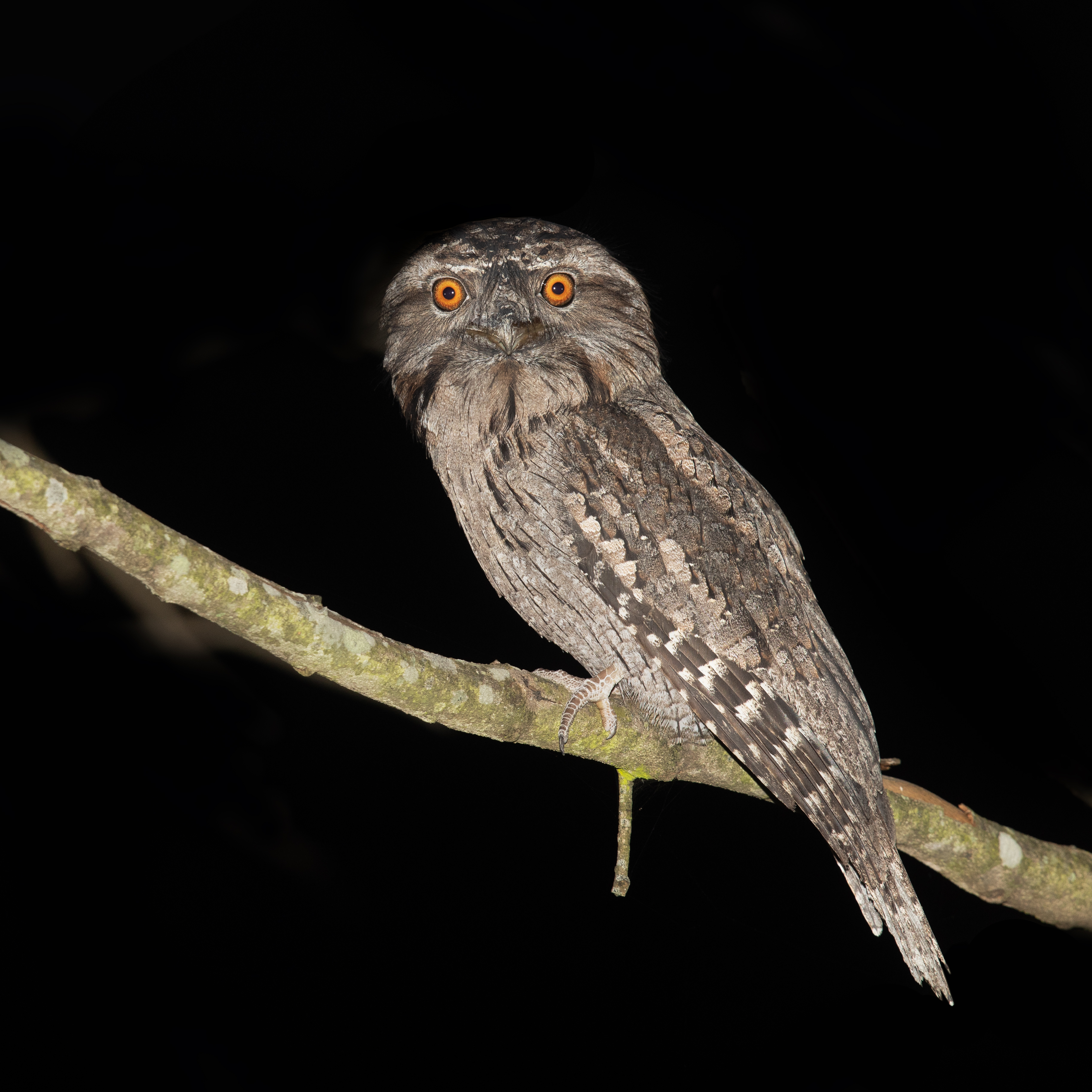
Tawny Frogmouth, NSW - photo by JJ Harrison
Floodplain Harvesting Rules Rejected By NSW Parliament
The Wentworth Group Of Concerned Scientists And The Environmental Defenders Office Response To NSW Government Claims Related To Access To Information About The Floodplain Harvesting Licencing Framework
Federal Budget 2021/22 Slashes $32m From Nature Conservation: Sinks Another $265m Into Carbon Capture Schemes
Kurri Kurri Gas Plant EIS Submitted: Federal Government Plays Game With Farmers’ Livelihoods
Submission To The Inquiry Into The Environment Protection And Biodiversity Conservation Amendment (Standards And Assurance) Bill 2021
- The Bill fails to prescribe clear requirements for the quality and application of national environmental standards. Consequently, it is impossible to guarantee that States and Territories would protect matters of national environmental significance in the national interest or that the poor environmental outcomes currently occurring under the EPBC Act would be addressed.
- The Environmental Assurance Commissioner does not have sufficient powers or resources to undertake independent compliance and enforcement of Commonwealth, states and territories.
- There is no public commitment that all the urgent reforms identified by the final Report will be implemented to deliver comprehensive improvement to the Act.
- A requirement that national environmental standards must be developed for all MNES in a scientific, evidence-based manner by appropriate experts, and a requirement that national environmental standards must be consistent with the objectives of the EPBC Act, including:
- ‘Maintain or enhance’ the absolute outcomes for all matters of national environmental significance; and
- Address cumulative impacts, at all scales (e.g. national, state, regional and individual project levels).
- Removing the limit on monitoring and auditing individual decisions and actions;
- Clarifying powers to compel production of information;
- Requiring the Minister to respond publicly to audit reports;
- Clarifying that any person can refer a complaint to the EAC;
- Requiring a mandatory compliance and enforcement standard be developed as a precondition to any accreditation or devolution; and
- Ensuring adequate funding for effective operation.
Firefighting Chemical Found In Sea Lion And Fur Seal Pups
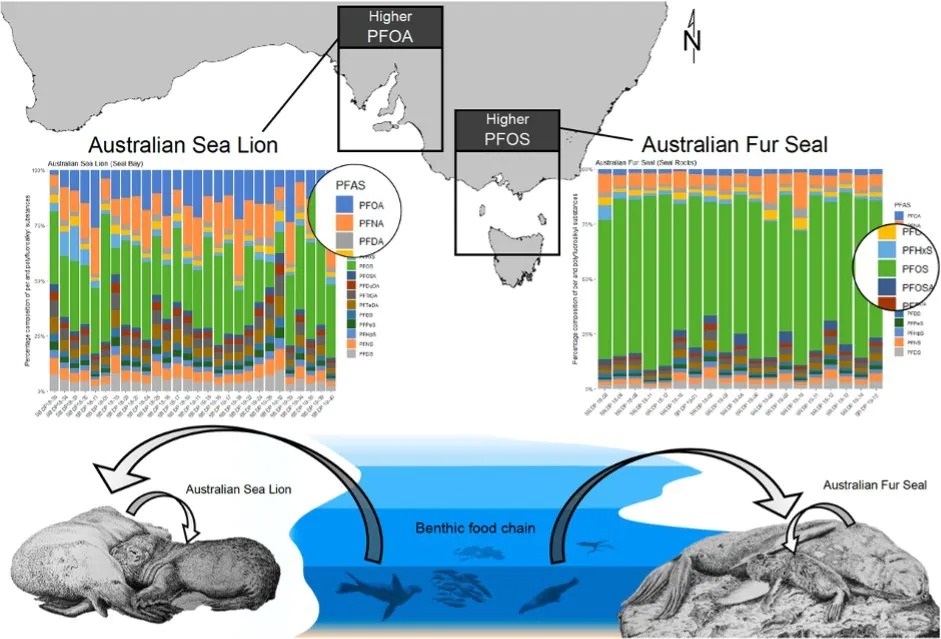
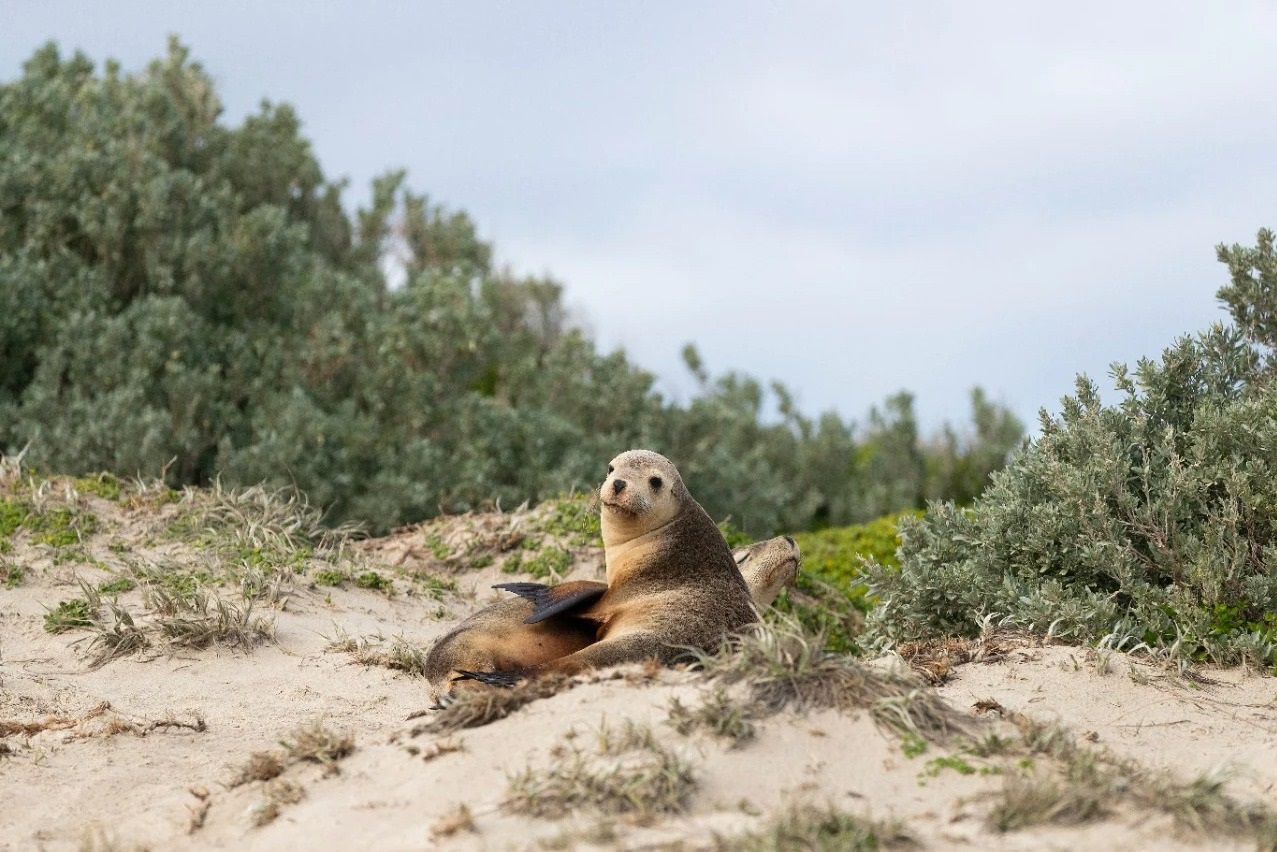
Fracking Company Clears Land Equivalent To Distance From Perth To London In Kimberley: McGowan Government Says No Permit Needed
Time Running Out To Save Coral Reefs
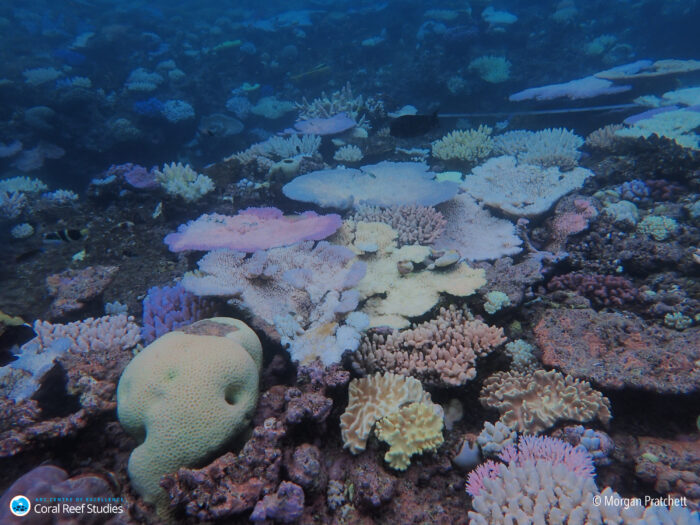 New research on the growth rates of coral reefs shows there is still a window of opportunity to save the world's coral reefs -- but time is running out. The international study was initiated at the ARC Centre of Excellence for Coral Reef Studies (Coral CoE), which is headquartered at James Cook University (JCU).
New research on the growth rates of coral reefs shows there is still a window of opportunity to save the world's coral reefs -- but time is running out. The international study was initiated at the ARC Centre of Excellence for Coral Reef Studies (Coral CoE), which is headquartered at James Cook University (JCU).NSW Government To Strengthen Planning For Natural Hazards: Feedback Wanted
New guidelines to help communities and councils plan for natural hazards such as bushfires, drought and floods have been released today for public feedback - until June 8, 2021.
In releasing the draft Strategic Guide to Planning for Natural Hazards in NSW, Minister for Planning and Public Spaces Rob Stokes said the recent flooding which devastated parts of the state emphasised the need to plan strategically for natural hazards.
“Our state is the best place to live in Australia but with its natural beauty comes challenges,” Mr Stokes said.
“In the last few years we’ve experienced some of the worst drought, bushfires and flooding on record so it’s important we continually learn and adapt how we plan for these hazards.
“This draft guide supports the findings of the Bushfire Royal Commission that we need to better address legacy risk in our communities by making sure that strategic land[1]use planning builds resilience to known hazards.”
Minister for Police and Emergency Services David Elliott said NSW has been hit by a series of natural disasters in recent years and the NSW Government is working to reduce the impact and costs of extreme weather events on communities where possible.
“Between 2009 and 2019, NSW was affected by 198 declared natural disasters which resulted in significant losses and cost the State approximately $3.6 billion per year,” Mr Elliott said.
“That’s why we need to future proof our regions rather than reacting to disasters when they occur – prevention and mitigation are critical.”
The draft document comprises eight guiding principles:
- Consider natural hazard risk early
- Protect vulnerable people and assets
- Adopt an all-hazards approach
- Involve the community in conversations about risk
- Plan for emergency response and evacuation
- Be information driven· Plan to rebuild the future, not the present
- Understand the relationship between natural processes and natural hazards
The NSW Government’s flood prone planning package will be finalised shortly.
For more information and to provide feedback on the draft natural hazard guide visit planning.nsw.gov.au/Natural-hazards
New Plan To Revitalise Oldest NSW's Park By Installing Mountain Bike Trails
- Royal National Park, Heathcote National Park, Garawarra State Conservation Area Draft Planning Considerations
- Royal National Park, Heathcote National Park and Garawarra State Conservation Area Draft Plan of Management
- Royal National Park, Heathcote National Park and Garawarra State Conservation Area Draft Mountain Biking Plan
The budget should have been a road to Australia's low-emissions future. Instead, it's a flight of fancy
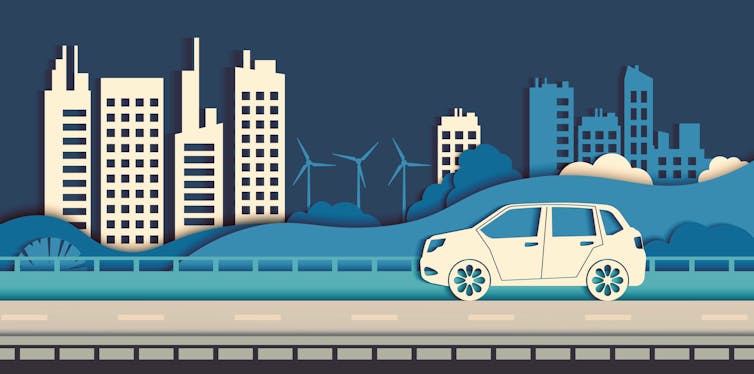
Looking at other nations around the world, the path to cutting greenhouse gas emissions seems clear.
First, develop wind and solar energy and battery storage to replace coal- and gas-fired electricity. Then, replace petrol and diesel cars with electric vehicles running off carbon-free sources. Finally, replace traditionally made steel, cement and other industries with low-carbon alternatives.
In this global context, the climate policies announced in Tuesday’s federal budget are a long-odds bet on a radically different approach. In place of the approaches adopted elsewhere, the Morrison government is betting heavily on alternatives that have failed previous tests, such as carbon capture and storage. And it’s blatantly ignoring internationally proven technology, such as electric vehicles.
The government could have followed the lead of our international peers and backed Australia’s clean energy sector to create jobs and stimulate the post-pandemic economy. Instead, it’s sending the nation on a fool’s errand.
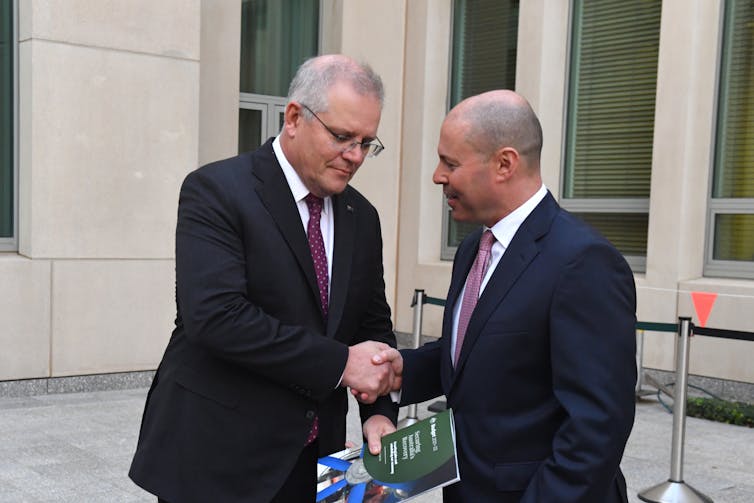
Carbon-Capture Folly
The Morrison government is taking a “technology, not taxes” approach to emissions reduction. Rather than adopt a policy such as a carbon price – broadly considered the most effective and efficient way to cut emissions – the government has instead pinned its hopes on a low-emissions technology plan.
That means increased public spending on research and development, to accelerate the commercialisation of low emissions technologies. The problems with this approach are most obvious in relation to carbon capture and storage (CCS).
The budget contains A$263.7 million to fund new carbon capture and storage projects. This technology promises to capture some – but to date, not all – carbon dioxide at the point of emission, and then inject it underground. It would allow continued fossil fuel use with fewer emissions, but the process is complex and expensive.
In fact, recent research found of 39 carbon-capture projects examined in the United States, more than 80% ended in failure.
Read more: The 1.5℃ global warming limit is not impossible – but without political action it soon will be
The government’s CCS funding is focused on capturing CO₂ from gas projects. This is despite the disappointing experience of Australia’s only CCS project so far, Chevron’s Gorgon gas field off Western Australia.
Some 80% of emissions from the operation were meant to be captured from 2016. But the process was delayed for three years, allowing millions of tonnes of CO₂ to enter the atmosphere. As of January this year, the project was still facing technical issues.
CCS from gas will be expensive even if it can be made to work. Santos, which has proposed a CCS project at its Moomba gas plant in South Australia, suggests a cost of $A30 per tonne of CO₂ captured.
This money would need to come from the government’s Climate Solutions Fund, currently allocated about A$2 billion over four years. If Moomba’s projected emissions reduction of 20 million tonnes a year were realised, this project alone would exhaust the fund.
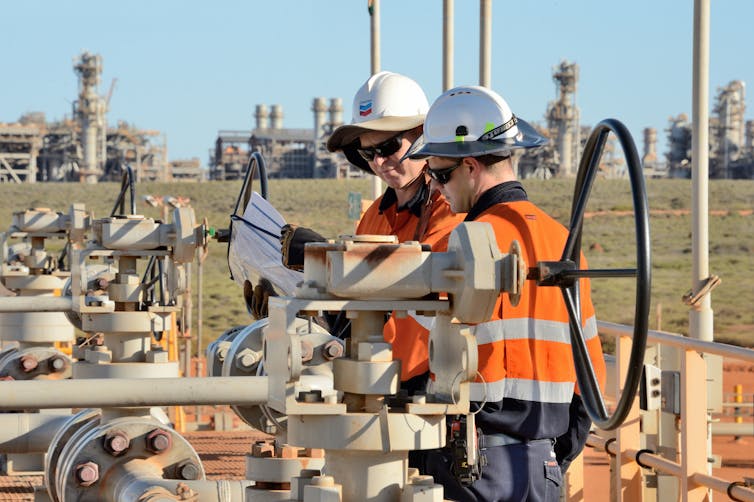
What About Electric Vehicles?
There is a striking contrast between the Morrison government’s enthusiasm for carbon capture, and its neglect of electric vehicles.
It ought to be obvious that if Australia is to achieve a target of net-zero emissions by 2050 – which Treasurer Josh Frydenberg this week reiterated was his government’s preference – the road transport sector must be decarbonised by then.
The average age of Australian cars is about 10 years. This implies, given fairly steady sales, an average lifespan of 20 years. This in turn implies most petrol or diesel vehicles sold after 2030 will have to be taken off the road before the end of their useful life.
In any case, such vehicles will probably be very difficult to buy within 15 years. Manufacturers including General Motors and Volvo have announced plans to stop selling petrol and diesel vehicles by 2035 or earlier.
But the Morrison government has ruled out consumer incentives to encourage electric vehicle uptake – a policy at odds with many other nations, including the US.
Read more: The US jumps on board the electric vehicle revolution, leaving Australia in the dust
Despite the “technology, not taxes” mantra, this week’s federal budget ignored electric vehicles. This includes a A$10 billion infrastructure spend which did not include charging stations as part of highway upgrades.
Unless the government takes action soon, Australian motorists will be faced with the choice between a limited range of second-rate petrol and diesel vehicles, or electric vehicles for which key infrastructure is missing.
It’s hard to work out why the government is so resistant to doing anything to help electric vehicles. Public support appears strong. There are no domestic carmakers left to protect.
The car retail industry is generally unenthusiastic about electric vehicles. Its business model is built on combining competitive sticker prices with a high-margin service and repair business, and electric vehicles don’t fit this model.
At the moment (although not for much longer), electric vehicles are more expensive than traditional cars to buy upfront. But they are cheaper to run and service.
There are fears of job losses in car maintenance as electric vehicle uptake increases. However, car dealers have adjusted to change in the past, and can do so in future.

Wishful Thinking
The Morrison government is still edging towards announcing a 2050 net-zero target in time for the United Nations Climate Change Conference in Glasgow this November. But as Prime Minister Scott Morrison himself has emphasised, there’s no point having a target without a strategy to get there.
Yet at this stage, the government’ emissions reduction strategy looks more like wishful thinking than a road map.
John Quiggin, Professor, School of Economics, The University of Queensland
This article is republished from The Conversation under a Creative Commons license. Read the original article.
The carbon footprint of Airbnb is likely bigger than you think

In its 13 years of existence, Airbnb has grown from a minnow to a whale in holiday accommodation. Today, it offers more than 5.6 million active listings across 220 countries and regions. In Australia, Airbnb lists 346,581 spaces — that’s 4% of Australia’s total housing stock.
Tourists often perceive Airbnb as having a relatively small environmental footprint compared with other forms of holiday accommodation. Airbnb reinforces this view, saying “home sharing promotes more efficient use of existing resources and is a more environmentally sustainable way to travel”.
But our study, published in the Journal of Sustainable Tourism, suggests Airbnb has a bigger carbon footprint than many realise.
Assessing Airbnb’s Direct, Indirect And Induced Carbon Footprint In Sydney
We focused our study on the Sydney Airbnb market. Our calculations factored in things like electricity, household equipment, water and other energy, transport, communications, goods and services and so on.
In Sydney, we calculated Airbnb.com and its hosts generate direct and indirect carbon emissions of between 7.27 and 9.39 kilograms of carbon dioxide equivalent (CO₂e) per room and night – about the same as an economy hotel.
The carbon footprint increases when we include what’s called “induced carbon emissions”. They result from Airbnb hosts spending their extra Airbnb income on purchasing additional goods and services to improve customer service for their guests, and to improve their own living standards.
Our study modelled various induced carbon emissions scenarios.
If Airbnb hosts put all their extra income into a savings account rather than spending it on goods and services, the carbon footprint of Airbnb ranges from 11 to 13 kg CO₂e per room per night.
But if hosts spend all their extra income from Airbnb, the total carbon emissions can reach 602 kg CO₂e per room and night – as much as is generated by taking a flight in economy class from Sydney to Auckland.
When you include direct, indirect and induced carbon footprint, the average carbon footprint for an Airbnb room is 44-46kg CO₂e per room and night – about as much as is generated by driving a large petrol car from Sydney to Wollongong.
Global Environmental Impacts
This analysis shows most tourist accommodation — be it Airbnb or traditional hotel accommodation — comes with sizeable greenhouse emissions. Collectively, accommodation accounts for about 1% of global emissions and 20% of tourism emissions.
The Sustainable Hospitality Alliance suggests hotels reduce their carbon emissions by 90% per room to be consistent with the 2℃ threshold under the Paris Agreement.

The Impact Of COVID-19
COVID-19 has been the single most effective “intervention” in terms of reducing tourism-related carbon emissions: aviation-related emissions alone dropped by 60%.
COVID-19 resulted in a 90% income loss for Airbnb hosts in Sydney between January and August last year. Airbnb listings dropped from 12,067 to 2,196.
To cover their ongoing expenses, many Airbnb hosts sought shelter in the long-term rental market. Investor hosts, who purchased or were renting a property to make money in the short-term rental market, were particularly hard-hit.
In some areas, many are now slowly returning to hosting. As nations around the world achieve high population vaccination rates, travel restrictions will eventually be lifted and travel will boom again. So it’s important to think carefully about the environmental impact of the tourism sector.
A Sustainable Tourism Future
There’s no obvious pathway to a truly environmentally sustainable future for tourism in general, and peer-to-peer accommodation specifically. Airbnb is here to stay. For its part, Airbnb has vowed to “set a new standard for sustainable travel”, saying:
We are measuring the carbon footprint of both Airbnb’s corporate operations and the carbon footprint of travel facilitated by the Airbnb platform. Measuring our impact informs our efforts to reduce our carbon footprint and set a new standard for sustainable travel.
Carbon emissions are an inevitable consequence of the Airbnb industry, but there’s a lot Airbnb hosts can do, including:
investing their income into sustainability measures in their property, such as rainwater tanks, solar panels, solar batteries and composting systems
opting into carbon neutral certified electricity or gas
providing small appliances such as toasters, sandwich makers or air fryers and a meal ideas book to entice people to make waste-free food instead of ordering take-away
encouraging their guests to reduce, reuse and recycle.
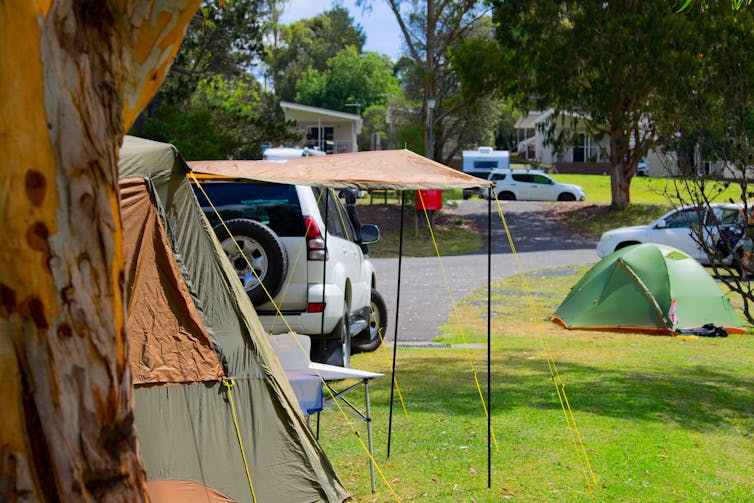
And if you’re a holidaymaker, consider ways to make your own tourism more sustainable. Camping makes an excellent lower emissions alternative to staying in a hotel or Airbnb, and holidaying closer to home also lowers your carbon footprint.
Airbnb has 5.6 million active listings worldwide. That’s 5.6 million opportunities to reduce carbon emissions. It’s also worth noting Airbnb.com is a highly effective communication platform. Airbnb could use it to give hosts simple ideas on how to reduce their carbon emissions, many of which would likely save hosts money in the long run.
Read more: What did COVID do to rental markets? Rents fell as owners switched from Airbnb ![]()
Mingming Cheng, Senior Lecturer, School of Management and Marketing, Curtin University; Guangwu Chen, Visiting Research Fellow, UNSW, and Sara Dolnicar, Research professor, The University of Queensland
This article is republished from The Conversation under a Creative Commons license. Read the original article.
Defending The Unburnt: EDO Launches Landmark Legal Initiative
- 14 million hectares burned. Nearly 3 billion native animals impacted. Entire communities all but destroyed.
- We have a plan to defend what remains.
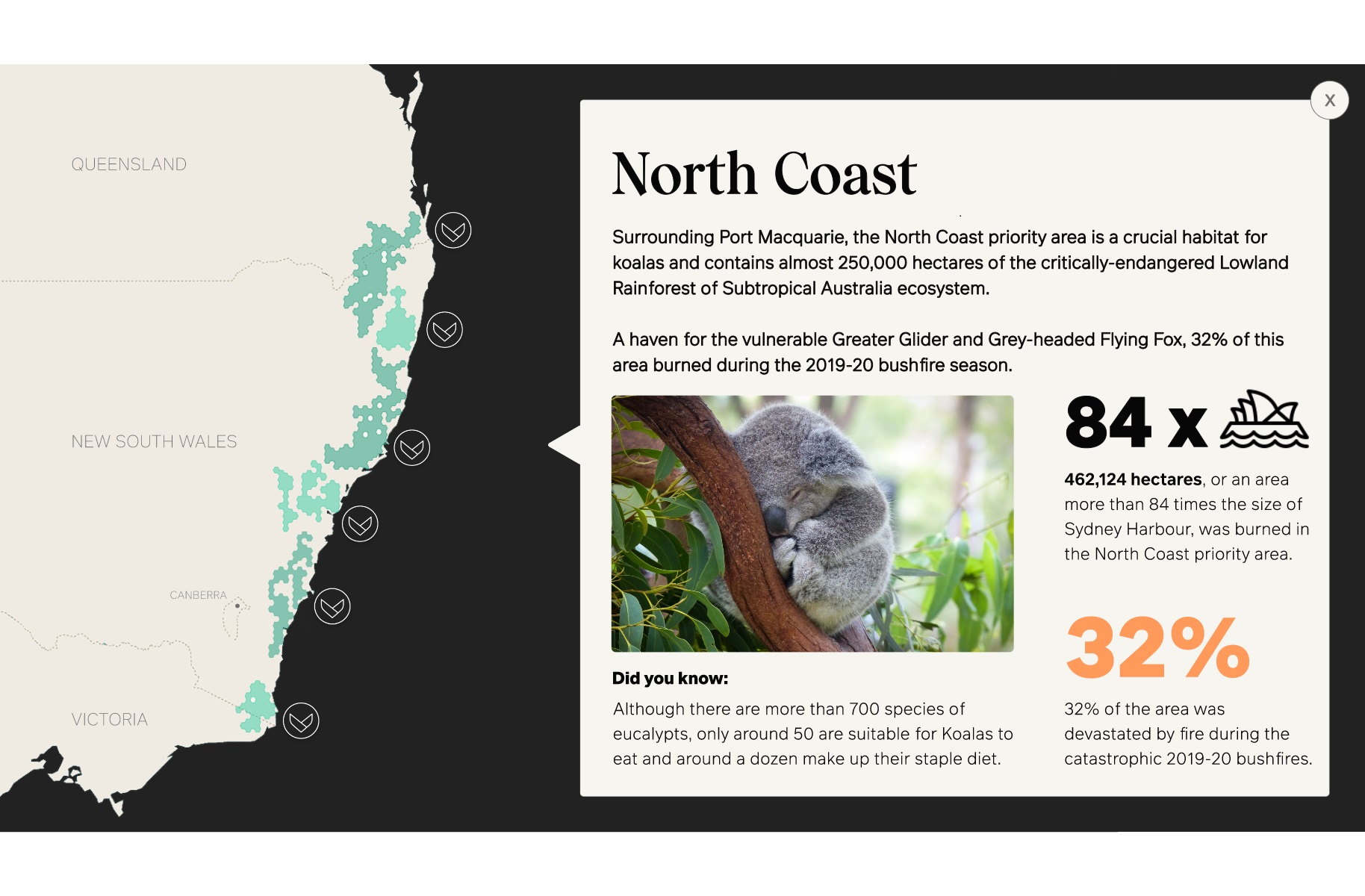
Bushcare In Pittwater
Where we work Which day What time
Avalon
Angophora Reserve 3rd Sunday 8:30 - 11:30am
Avalon Dunes 1st Sunday 8:30 - 11:30am
Avalon Golf Course 2nd Wednesday 3 - 5:30pm
Careel Creek 4th Saturday 8:30 - 11:30am
Toongari Reserve 3rd Saturday 9 - 12noon (8 - 11am in summer)
Bangalley Headland 2nd Sunday 9 to 12noon
Bayview
Winnererremy Bay 4th Sunday 9 to 12noon
Bilgola
North Bilgola Beach 3rd Monday 9 - 12noon
Algona Reserve 1st Saturday 9 - 12noon
Plateau Park 1st Friday 8:30 - 11:30am
Church Point
Browns Bay Reserve 1st Tuesday 9 - 12noon
McCarrs Creek Reserve Contact Bushcare Officer To be confirmed
Clareville
Old Wharf Reserve 3rd Saturday 8 - 11am
Elanora
Kundibah Reserve 4th Sunday 8:30 - 11:30am
 Mona Vale
Mona Vale Mona Vale Beach Basin 1st Saturday 8 - 11am
Mona Vale Dunes 2nd Saturday +3rd Thursday 8:30 - 11:30am
Newport
Bungan Beach 4th Sunday 9 - 12noon
Crescent Reserve 3rd Sunday 9 - 12noon
North Newport Beach 4th Saturday 8:30 - 11:30am
Porter Reserve 2nd Saturday 8 - 11am
North Narrabeen
Irrawong Reserve 2nd Saturday 2 - 5pm
Palm Beach
North Palm Beach Dunes 3rd Saturday 9 - 12noon
Scotland Island
Catherine Park 2nd Sunday 10 - 12:30pm
Elizabeth Park 1st Saturday 9 - 12noon
Pathilda Reserve 3rd Saturday 9 - 12noon
Warriewood
Warriewood Wetlands 1st Sunday 8:30 - 11:30am
Whale Beach
Norma Park 1st Friday 9 - 12noon
Western Foreshores
Coopers Point, Elvina Bay 2nd Sunday 10 - 1pm
Rocky Point, Elvina Bay 1st Monday 9 - 12noon
Gardens And Environment Groups And Organisations In Pittwater
Avalon Golf Course Bushcare Needs You


Pittwater Reserves

New Shorebirds WingThing For Youngsters Available To Download
A Shorebirds WingThing educational brochure for kids (A5) helps children learn about shorebirds, their life and journey. The 2021 revised brochure version was published in February 2021 and is available now. You can download a file copy here.
If you would like a free print copy of this brochure, please send a self-addressed envelope with A$1.10 postage (or larger if you would like it unfolded) affixed to: BirdLife Australia, Shorebird WingThing Request, 2-05Shorebird WingThing/60 Leicester St, Carlton VIC 3053.

 Shorebird Identification Booklet
Shorebird Identification Booklet
The Migratory Shorebird Program has just released the third edition of its hugely popular Shorebird Identification Booklet. The team has thoroughly revised and updated this pocket-sized companion for all shorebird counters and interested birders, with lots of useful information on our most common shorebirds, key identification features, sighting distribution maps and short articles on some of BirdLife’s shorebird activities.
The booklet can be downloaded here in PDF file format: http://www.birdlife.org.au/documents/Shorebird_ID_Booklet_V3.pdf
Paper copies can be ordered as well, see http://www.birdlife.org.au/projects/shorebirds-2020/counter-resources for details.
Download BirdLife Australia's children’s education kit to help them learn more about our wading birdlife
Shorebirds are a group of wading birds that can be found feeding on swamps, tidal mudflats, estuaries, beaches and open country. For many people, shorebirds are just those brown birds feeding a long way out on the mud but they are actually a remarkably diverse collection of birds including stilts, sandpipers, snipe, curlews, godwits, plovers and oystercatchers. Each species is superbly adapted to suit its preferred habitat. The Red-necked Stint is as small as a sparrow, with relatively short legs and bill that it pecks food from the surface of the mud with, whereas the Eastern Curlew is over two feet long with a exceptionally long legs and a massively curved beak that it thrusts deep down into the mud to pull out crabs, worms and other creatures hidden below the surface.
Some shorebirds are fairly drab in plumage, especially when they are visiting Australia in their non-breeding season, but when they migrate to their Arctic nesting grounds, they develop a vibrant flush of bright colours to attract a mate. We have 37 types of shorebirds that annually migrate to Australia on some of the most lengthy and arduous journeys in the animal kingdom, but there are also 18 shorebirds that call Australia home all year round.
What all our shorebirds have in common—be they large or small, seasoned traveller or homebody, brightly coloured or in muted tones—is that each species needs adequate safe areas where they can successfully feed and breed.
The National Shorebird Monitoring Program is managed and supported by BirdLife Australia.
This project is supported by Glenelg Hopkins Catchment Management Authority and Hunter Local Land Services through funding from the Australian Government’s National Landcare Program. Funding from Helen Macpherson Smith Trust and Port Phillip Bay Fund is acknowledged.
The National Shorebird Monitoring Program is made possible with the help of over 1,600 volunteers working in coastal and inland habitats all over Australia.
The National Shorebird Monitoring program (started as the Shorebirds 2020 project initiated to re-invigorate monitoring around Australia) is raising awareness of how incredible shorebirds are, and actively engaging the community to participate in gathering information needed to conserve shorebirds.
In the short term, the destruction of tidal ecosystems will need to be stopped, and our program is designed to strengthen the case for protecting these important habitats.
In the long term, there will be a need to mitigate against the likely effects of climate change on a species that travels across the entire range of latitudes where impacts are likely.
The identification and protection of critical areas for shorebirds will need to continue in order to guard against the potential threats associated with habitats in close proximity to nearly half the human population.
Here in Australia, the place where these birds grow up and spend most of their lives, continued monitoring is necessary to inform the best management practice to maintain shorebird populations.
BirdLife Australia believe that we can help secure a brighter future for these remarkable birds by educating stakeholders, gathering information on how and why shorebird populations are changing, and working to grow the community of people who care about shorebirds.
To find out more visit: http://www.birdlife.org.au/projects/shorebirds-2020/shorebirds-2020-program
Aussie Bread Tags Collection Points

Australia Post Unveils All-New Aussie Icons For Great Aussie Coin Hunt 2 Including Barrenjoey Headland For Home & Away - The Letter H!
May 10, 2021
Australia Post is celebrating iconic and admired symbols of Australian life with a whole new collection of $1 coins and the return of its most successful collectables program with the Great Aussie Coin Hunt 2.
The new coins, produced in partnership with the Royal Australian Mint, range from Akubra to Zinc sunscreen and include instantly recognisable Australian landmarks, like Q for Queen Victoria Market and S for the Sydney Harbour Bridge; much-loved brands, like M for MILO, T for Tim Tam and V for Victa Lawnmower; and even H for popular and longstanding television program Home and Away which features a landmark that will be familiar to Pittwater youngsters - Barrenjoey headland!

Australia Post Executive General Manager Community & Consumer Nicole Sheffield said the Great Aussie Coin Hunt 2 would again create a sense of fun and excitement with a touch of nostalgia as people reflect on their connection to the quintessentially Australian themes.
“We’re thrilled to once again partner exclusively with the Royal Australian Mint to celebrate 26 Australian icons and connect families and communities through the fun of the hunt and the good-humoured banter that it generates,” she said.
“This year, we are releasing the full alphabet from the start of the hunt but they will be in limited supply, so we encourage those who want the full set to get in quickly to secure their collection of great Aussie memorabilia.”

Royal Australian Mint CEO Mr Leigh Gordon said the icons on the coins feature everything from favourite foods to some of Australia’s lesser known native flora and fauna and were selected by sampling the Australian public.
“There is definitely something for everyone in this coin series and we are delighted to be again working with Australia Post to create a playful way for all Australians to engage with coins and take a light-hearted look at our way of life,” Mr Gordon said.
Designed to be fun for all ages, everyone can join in the hunt by going into one of more than 3,500 participating Post Offices, making a purchase and receiving the $1 collectable coins in their change, or by purchasing the entire collection instore or online.
For the ultimate discovery, keen coin hunters will want to keep an eye out for a special edition coloured coin of the Great Barrier Reef, randomly available in full set coin tubes.
For more information about the Great Aussie Coin Hunt 2 and to learn more about the Australian icons featured on the coins, visit aussiecoinhunt.com.au.

The Rions Win Northern Composure Unplugged
Wednesday, 12 May 2021
The Rions have won the 2021 edition of Northern Composure Unplugged final. The Ten finalists battled it out in front of a 200-strong live audience last Friday 7 May.
Thanks to their uber slick rendition of Australian singer-songwriter Matt Corby’s hit song Brother and an original composition of their own, the Rions got the nod from the judges.
The four-piece band won a thousand dollars in cash and prizes, a marketing and publicity package from Perfect Pitch, plus the opportunity to perform at the inaugural month-long Taste of the Beaches food and wine festival currently in full swing.
Finalists were selected from 26 entrants who had a song filmed and recorded at Glen Street Theatre in April and streamed online on the KALOF YouTube channel during National Youth Week.
Performances gained over 15,000 views and over 4,000 votes were cast for the Audience Choice award.
Finalists were assessed by a panel of music industry professionals: Dave Keogh of Perfect Pitch, Geoff Stanwell and Penny Howell of Northside Radio, Sam Wilkins from Council’s Community and Belonging Strategic Reference Group, Jenna Kim from Council’s Youth Advisory Group, and Kate Lush, internationally acclaimed and multi-award-winning musician.
The finals event was also recorded by Radio Northern Beaches and streamed online over the weekend.
Mayor Michael Regan said he was pleased to again experience the talent and enthusiasm of local young performers.
“It is very encouraging that we have such talented young people who have such great passion for their art,” Cr Regan said.
“I congratulate all this year’s participants and finalists for such high standard performances and great entertainment.
“Online views and voting was significantly higher than last year, so I would like to thank everyone who took the time to engage with and encourage our up-and-coming talent.”
The Rions said: “We are so stoked to be a part of KALOF’s Northern Composure event, it’s such an amazing opportunity for kids on the Northern Beaches and we congratulate all the other awesome contestants. Can't wait to team up with KALOF again for our sold out single launch on May 29 at Mona Vale Memorial Hall."
The remaining place getters and prizes are:
- 2nd – Tilli Kay, guitar & vocals, $250 cash and Mona Vale Music voucher;
- 3rd – Little Icaro, guitar & vocals, $150 cash and Mona Vale Music voucher;
- Audience Choice, Ava & Mia, duet, guitar & vocals $200 cash and Mona Vale Music Voucher
- Most Viewed Award – Ava & Mia, duet, guitar & vocals, $100 cash;
- Junior Encouragement Award – Gemma Willis, guitar & vocals, Mona Vale Music Voucher
All entrants received a copy of their professionally-recorded song to help them secure future performance opportunities, and finalists received a KALOF gift pack.
The Rions released a new single and video on April 14th - 'Night Light' runs below. Find out more on their website: therions.com
Ironcraft: Artisans Of Australia
Published May 12, 2021 by NFSA
From the Film Australia Collection. Made by Film Australia 1984. Directed by Paul Humfress. A detailed look at the making of cast iron lacework at a small iron foundry in Newtown, Sydney.
Jack Thomas, who has been working at the foundry since 1939, provides a tour through the process and, with his workmates, demonstrates the skills required. In this small workshop where a few workers cast iron in sand, the red hot metal and dim light give an unexpected glimpse of what iron work must have been like in the early years of the Industrial Revolution.
IRB Premiership Series Commences: Good Luck To Local Clubs
This weekend will see the first IRB (Inflatable Rescue Boat) racing event hit the water in two years. With 300 surf lifesavers raring to go, it will be a highly competitive two days to kick off the 2021 Sharkskin NSW IRB Premiership Series.
The first event of the season will see 17 club teams from six NSW branches taking to the surf with speed and precision for the start of the Sharkskin NSW IRB Premiership Series, hosted at Terrigal SLSC on the Central Coast this weekend.
The gun Kiama Downs SLSC team took out back-to-back wins in the last Sharkskin Premiership in 2019 with a narrow four-point lead as well as the State Championships that season.
The south coast club has a strong rivalry with Caves Beach SLSC with the two clubs taking turns at the top of the State Championships and Premierships series over the last decade. But it’s been 18 months since their last race so anything could happen in 2021.
Steve Strong led the Kiama Downs team through the last dual winning season and said his team of 20 is feeling good, fit and ready to get back on the line.
“Everyone is really keen to get back out there,” said Strong. “There are some clubs with big teams entered. We have about the same numbers as last time and feel like we can give it a shake against the bigger teams. Our boats feel good and we’ve spent time fine-tuning race setup and gear.”
Strong said despite feeling ready there is still a lot of unknowns around all the new younger crews.
“The time off has given everyone the chance to spend lots of time on development. Thirroul and Terrigal have some good new young crews and we have a couple of strong Under 23 male and female crews so it will be really interesting to see how everything unfolds for round one,” he said.
IRB racing is the opportunity for drivers and crew to develop and hone vital rescue skills in simulated scenarios under pressure. The out-of-season sport also provides the opportunity for lifesavers to keep fit and connected throughout winter.
2021 Participating Clubs:
Avalon Beach SLSC, Bondi SBLSC, Bungan Beach SLSC, Caves Beach SLSC, Helensburgh-Stanwell Park SLSC, Kiama Downs SLSC, Maroubra SLSC, Mona Vale SLSC, Newport SLSC, Nobbys SLSC, North Avoca SLSC, North Cronulla SLSC, Ocean Beach SLSC, Queenscliff SLSC, South Maroubra SLSC, Terrigal SLSC, Thirroul SLSC.
Sharkskin NSW IRB Premiership rounds:
- Round 1: 15-16 May, Terrigal SLSC (Central Coast)
- Round 2: 29-30 May, Cape Hawke SLSC (Lower North Coast)
- Round 3: 12-13 June, Warilla Barrack Point SLSC (South Coast)
- Round 4: 26-27 June, Ocean Beach SLSC (Central Coast)
NSW IRB Championships: 10-11 July, South West Rocks SLSC (Mid North Coast)
Events include:
- IRB Rescue
- IRB Mass Rescue
- IRB Teams Rescue
- IRB Rescue Tube
- IRB Relay
Male and Female Divisions:
- Rookie (first 2 years driving/over 18 years old)
- Under 23
- 35+
- 45+
- Open
.JPG.opt1460x973o0,0s1460x973.jpg?timestamp=1620963603299)
Icons And Future Stars To Headline Nudie Australian Boardriders Battle National Final In Newcastle This Weekend: Good Luck To Local Clubs Competing
Former World Number Eight Josh Kerr will bookend a Snapper Rocks team primed to challenge for the title at this year’s nudie Australian Boardriders Battle National Series Final this Saturday and Sunday, May 15th and 16th.
‘Kerrsy’ lines up in a strong team that includes the likes of Jay Phillips, Sheldon Simkus, Kobie Enright and Jaggar Bartholomew.
“It’s been a long time since I’ve pulled on the jersey for Snapper in the National Final so I’m really excited about this weekend. We have a great young squad with the experience of Jay Phillips and I to balance the team. We have a proud history of winning the event and hope to get another trophy for the cabinet this year!”
Other big names set to surf for their clubs include young guns Molly Picklum (North Shelly), Caleb Tancred (Avoca), Ellie Harrison (Torquay), Sophie McCulloch ( North Shore) and Dylan Moffat (North Narrabeen).
Moffat, who recently put on quite a performance in front of his home crowd as a Wildcard in the Rip Curl Narrabeen Classic WSL Championship Tour event, is well aware of the calibre of surfer the nudie Australian Boardriders Battle National Final attracts.
Dylan Moffat said “There’s a long list of really amazing surfers competing in this year’s Final. We at North Narrabeen feel we have a really well-rounded team and can’t wait to see how deep we can go in the comp come the Sunday afternoon, history shows we are always a big shot at the title!”
The event will be livestreamed via: www.australianboardridersbattle.com
nudie Australian Boardriders Battle National FinalWildcardClubs:
NORTH SHELLY BOARDRIDERS
NORTH NARRABEEN BOARDRIDERS CLUB
POINT LOOKOUT BOARDRIDERS CLUB
TORQUAY BOARDRIDERS CLUB
ELOUERA BOARDRIDERS CLUB
nudie TRIALS WINNER
nudie Australian Boardriders Battle National Final Qualified Clubs:
NORTH SHORE BOARDRIDERS CLUB
SNAPPER ROCKS SURFRIDERS CLUB
NOOSA BOARDRIDERS CLUB
BURLEIGH HEADS BOARDRIDERS
MEREWETHER SURFBOARD CLUB
AVOCA BOARDRIDERS
LONG REEF BOARDRIDERS ASSOCIATION
LE-BA BOARDRIDERS
COFFS HARBOUR BOARDRIDERS
KINGSCLIFF BOARDRIDERS CLUB
SCARBOROUGH BOARDRIDERS CLUB
BONDI BOARDRIDERS
MAROUBRA UNITED BOARDRIDERS
TRIGG POINT BOARDRIDERS
SEAFORD BOARDRIDERS
SOUTHARM BOARDRIDERS
PHILLIP ISLAND BOARDRIDERS CLUB
PENINSULA SURFRIDERS CLUB
For more head over to www.australianboardridersbattle.com
Learn How To Talk To The Animals At TAFE NSW
It was a love for animals, rather than the growing demand for animal attendants and veterinary nurses, that encouraged TAFE NSW students to broaden their skills caring for all things great and small.
The importance of a skilled animal care and management industry was highlighted by the 2019-2020 bushfires and COVID-19. It could not be a better time for the students to be considering a career in the animal care industry with Australia’s pet population, 29 million, is now higher than its human population.
TAFE NSW Animal Care and Management Head Teacher, Sherryn Page said whether you’re looking to start your career or broaden your skills to get the job you want, TAFE NSW offers a variety of courses that will equip students with the job-ready skills to be able to work in a variety of animal care fields.
“Students will gain knowledge and experience of what it is like to work as a nurse in a veterinary hospital or as an animal care attendant in a variety of facilities, such as boarding kennels and catteries, pet shops, grooming parlours, zoo’s, marine and wildlife parks”
Self-confessed animal lover, 21-year-old Kayla McGilvery, was able to secure work at as a full-time vet nurse at the Maudsland Veterinary Surgery after completing a Certificate II in Animal Studies and a Certificate IV in Veterinary Nursing at TAFE NSW Wollongbar.
“I’ve always had a passion for animals and have learnt how to work with them and communicate better with clients by studying the courses,” Ms McGilvery said.
“I really enjoyed the flexibility of the courses and only having to attend classes one or two days per week. The teachers were so supportive and really encouraged me to keep going with my studies.”
Byron Bay resident, Hayley Carbery, is completing a Certificate IV in Veterinary Nursing at TAFE NSW Wollongbar and has already secured employed at MyVet Byron Bay.
“I’ve had a passion for animals for years and now I feel I’ve found my niche. On-the-job, practical training is a major part of my work and my TAFE NSW study meshes in well with that.”
“I encourage anyone who is interested in the animal care industry to speak to someone at TAFE NSW about your goals. The only failure is not having a go or striving to do your best.”
For more information on animal care and services course phone 13 16 01 or visit www.tafensw.edu.au.
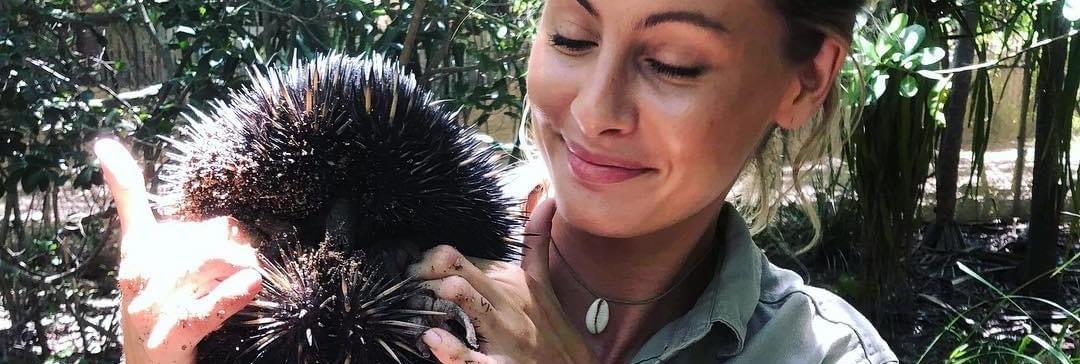
Hayley Carbery with a local patient
Some Oldsters-Youngsters Fun: 2017 'Don't Stop Me Now' (Queen) Lip Sync
As part of the 'Let's Find our Voice' project this fun lip sync clip was produced by Christine Walters, with the students & residents of FCJ College Benalla & Cooinda Benalla Aged Care.
Copyright: All rights reserved to the respected artists: Queen, Freddy Mercury, EMI Publishing, Sony ATV Music.
To understand racism, kids must empathise with its impact — and teachers must embrace discomfort

For people who experience racism, the pain sometimes comes as much from words as it does from actions. Indigenous people like Adam Goodes and Latrell Mitchell have spoken of the hurt they feel when they’re subject to racist slurs.
Words and actions used to demean people on the basis of race or colour can be found throughout everyday society and may even be seen as innocuous. Recent government bans on Australian citizens returning from India highlight one way non-white people can be excluded from society.
Read more: It's not surprising Indian-Australians feel singled out. They have long been subjected to racism
People of Indian or African heritage who were born in Australia or, as in my case, the United Kingdom, often face questions like, “Where are you from?” The answer is regularly met with some disbelief.
To be subject to the continual presumption that skin colour other than white is country-specific and non-Australian is humiliating, no matter how subtle it may be.
Changing how people act in terms of race and colour means changing their attitudes towards difference. Learning about the context in which racial words originated and why they are hurtful is crucial to achieving this.
Why The History Of Words Matters
Education is an important strategy in the campaign against racist behaviour and language. Intercultural understanding is part of the Australian Curriculum and mandated by its “general capabilities” — which must be taught throughout all learning areas where appropriate.
The current curriculum review recommends a reinforcement of this intercultural understanding. The draft changes offer greater emphasis on First Nations perspectives of Australian history and more acknowledgement of Australia’s multicultural society.
But it’s not enough to just passively incorporate such education. Changing children’s attitudes towards race and, in particular, the idea (or irrelevance) of skin colour, can be best done if they learn by experiencing the negative feelings people of different races, and with different skin, colours can feel.
This kind of education is known as “pedagogies of discomfort”. It involves teachers deliberately placing students in situations where they feel uneasy. In this way students can critically engage with difficult topics that are often unacknowledged or silenced in the classroom.
The use of challenging scenarios in education is not new. One example that has been in place for many years is the blue-eyed/brown-eyed experiment. In this scenario, students are told brown-eyed people are superior to blue-eyed people. The brown-eyed children, for a time, experience exclusion.
The roles are then switched so both groups can understand how the “minority” groups feel and how quickly prejudice can form.
More widely, Holocaust education is based on presenting current generations of children with the reality of the Holocaust in images, language and human actions, no matter how graphic.
Similarly, understanding the history of words like “nigger” is important to empathise with the way they impact on people of colour.
Children need to learn that the word, which was used by slave owners, is derived from the African region of Niger from where many Africans were transported to the United States as slaves. Rather than calling African people by their names, slave owners used the word to dehumanise them. The word “nigger” is a derogatory term; in effect, it is historically interchangeable with “slave”.
The Dilemma For Teachers
Teachers find it difficult and troubling to use words like “nigger”, “Abo”, “negro” and “coon” in teaching about racism. Some teachers find it equally difficult to deal with words that might be less confrontational, such as “ape”. Research shows teachers of literature find discussing books with themes of racial or colour prejudice particularly difficult.
Australian research also indicates teachers are likely to only respond to student questions to such sensitive topics, rather than raising the issues themselves. This is partly because of the perceived difficulties about using troubling language.
In my experiences with student teachers, I’ve noticed many are reluctant to even have a discussion about how to employ examples of racist language in teaching about cultural understanding.
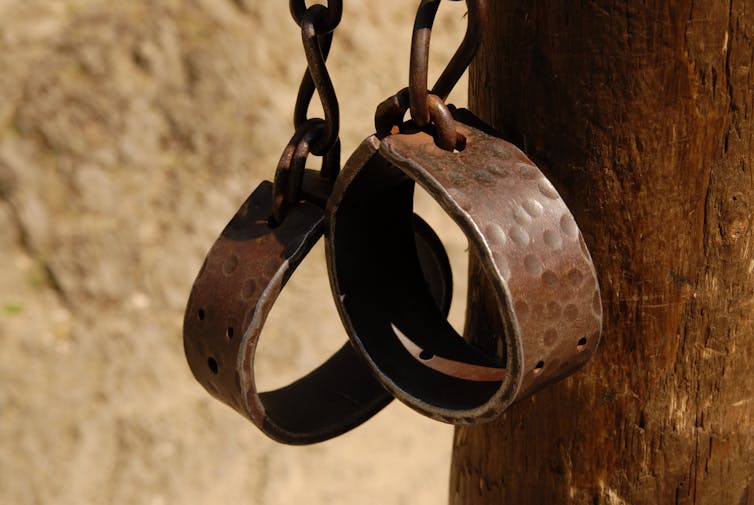
If teachers don’t accept the challenge of proactively educating children about racist language, young people may not understand its hurtful impact. And they may take this ignorance through into adulthood.
Teaching Sensitively
Confronting topics when teaching about racism must be approached in a controlled environment. There are four main considerations to bear in mind:
1. Timing matters
The learning experience should be planned for a time in the school year when the teacher and students have built up a relationship of mutual trust. A debriefing discussion is essential.
Teaching about sensitive language is nuanced. It is more appropriate for the upper levels of primary school or in secondary school. The teacher knows their students and should be able to judge how these themes should be taught. This includes knowing if there are students in the class who may have been personally affected by the use of racist language or confronting educational scenarios.
2. Prior discussions are necessary
Teachers should discuss their plans with the appropriate school leadership so their learning intentions can be supported publicly, if necessary.
Read more: 9 tips teachers can use when talking about racism
Teachers should also have prior discussions with students who have been affected by racism and their parents. They can inform the students about the nature of the forthcoming lessons and come to an agreement with them as to their participation.
3. Teachers need personal and professional expertise
Research suggests teachers who have learned from personal and professional experiences involving “cultural displacement” are more likely to have developed the kind of expertise required to manage “pedagogies of discomfort” in cultural education. Including cultural pedagogies of discomfort in teacher education can significantly help prepare teachers to engage proactively with racist behaviours as part of their work.
Teaching kids about racism is rarely comfortable, but neither is being exposed to racial abuse. Kids need to face discomfort to truly empathise with how it feels.![]()
Niranjan Casinader, Adjunct Senior Lecturer in Education, Faculty of Education, Monash University
This article is republished from The Conversation under a Creative Commons license. Read the original article.
Where do meteorites come from? We tracked hundreds of fireballs streaking through the sky to find out
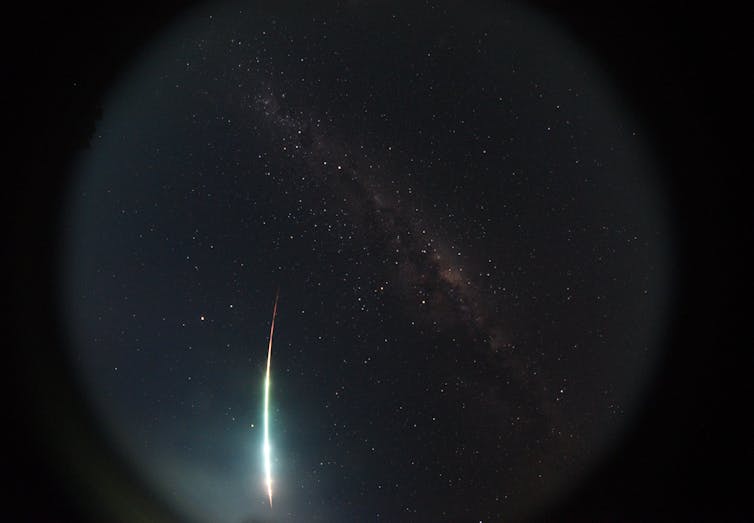
If asked where meteorites come from, you might reply “from comets”. But according to our new research, which tracked hundreds of fireballs on their journey through the Australian skies, you would be wrong.
In fact, it is very likely that all meteorites — space rocks that make it all the way to Earth — come not from icy comets but from rocky asteroids. Our new study found that even those meteorites with trajectories that look like they arrived from much farther afield are in fact from asteroids that simply got knocked into strange orbits.
We searched through six years’ worth of records from the Desert Fireball Network, which scans the Australian outback for flaming meteors streaking through the sky. None of what we found came from comets.
That means that of the tens of thousands of meteorites in collections around the world, likely none are from comets, leaving a significant gap in our understanding of the Solar System.
When the Solar System formed, more than 4.5 billion years ago, a disc of dust and debris was swirling around the Sun.
Over time, this material clumped together, forming larger and larger bodies — some so large they swept up everything else in their orbit, and became planets.
Yet some debris avoided this fate and is still floating around today. Scientists traditionally classify these objects into two groups: comets and asteroids.
Asteroids are rockier and drier, because they were formed in the inner Solar System. Comets, meanwhile, formed further out, where ices such as frozen water, methane or carbon dioxide can remain stable — giving them a “dirty snowball” composition.
The best way to understand the origin and evolution of our Solar System is to study these objects. Many space missions have been sent to comets and asteroids over the past few decades. But these are expensive, and only two (Hayabusa and Hayabusa2) have successfully brought back samples.
Read more: The Hayabusa2 spacecraft is about to drop a chunk of asteroid in the Australian outback
Another way to study this material is to sit and wait for it to come to us. If a piece of debris happens to cross paths with Earth, and is large and robust enough to survive hitting our atmosphere, it will land as a meteorite.
Most of what we know about the Solar System’s history comes from these curious space rocks. However, unlike space mission samples, we don’t know exactly where they originated.
Meteorites have been curiosities for centuries, yet it was not until the early 19th century that they were identified as extraterrestrial. They were speculated to come from lunar volcanoes, or even from other star systems.
Today, we know all meteorites come from small bodies in our Solar System. But the big question that remains is: are they all from asteroids, or do some come from comets?
Read more: Asteroid dust brought back to Earth may explain where our water came from with hydrogen clues
In total, scientists around the world have collected more than 60,000 meteorites, mostly from desert regions such as Antarctica or Australia’s Nullarbor Plain.
We now know most of these come from the main asteroid belt – a region between Mars and Jupiter.
But might some of them have come not from asteroids, but from comets that originated in the outer reaches of the Solar System? What would such meteorites be like, and how would we find them?
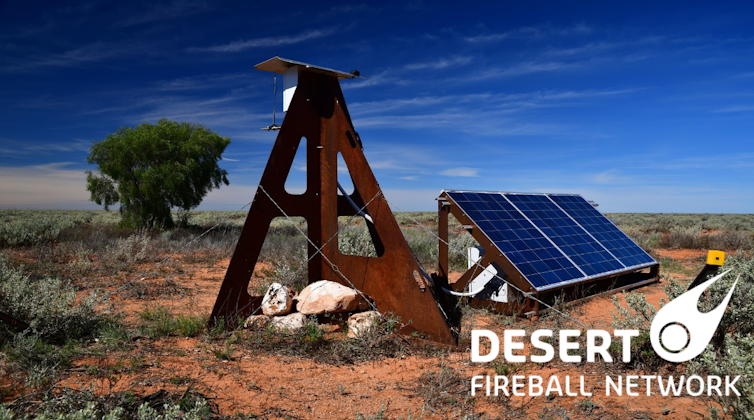
Fortunately, we can actively look for meteorites, rather than hoping to stumble across one lying on the ground. When a space rock is falling through the atmosphere (at this stage, it’s known as a meteor), it begins to heat up and glow — hence why meteors are nicknamed “shooting stars”.
Larger meteors (at least tens of centimetres across) glow brightly enough to be termed “fireballs”. And by training cameras on the sky to spot them, we can track and recover any resulting meteorites.
The largest such network is the Desert Fireball Network, which features around 50 cameras covering more than 2.5 million square kilometres of the Australian outback.
The network’s data has resulted in the recovery of six meteorites in Australia, and two more internationally. What’s more, by tracking a fireball’s flight through the atmosphere, we can not only project its path forwards to find where it landed, but also backwards to find out what orbit it was on before it got here.
Our research, published in The Planetary Science Journal, scoured every fireball tracked by the DFN between 2014 and 2020, in search of possible cometary meteorites. In total, there were 50 fireballs that came from comet-like orbits not associated with a meteor shower.
Unexpectedly, despite the fact that just under 4% of the larger debris was from comet-like orbits, none of the material featured the hallmark “dirty snowball” chemical composition of true cometary material.
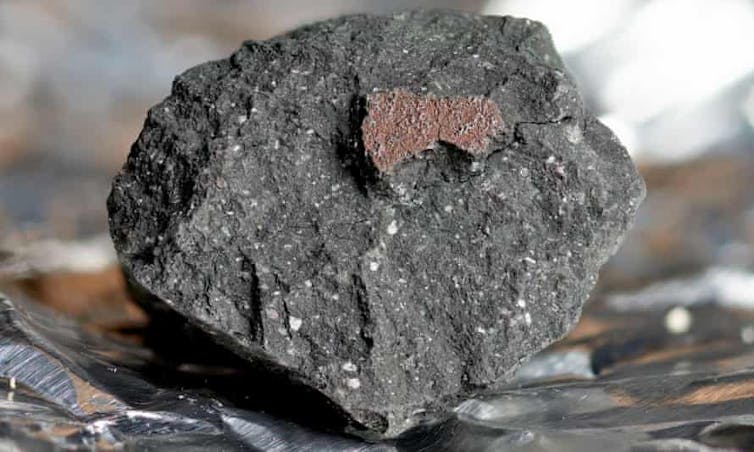
We concluded that debris from comets breaks up and disintegrates before it even gets close to becoming a meteorite. In turn, this means cometary meteorites are not represented among the tens of thousands of objects in the world’s meteorite collections.
The next question is: if all meteorites are asteroidal, how did some of them end up in such weird, comet-like orbits?
For this to be possible, debris from the main asteroid belt must have been knocked from its original orbit by a collision, close gravitational encounter, or some other mechanism.
Meteorites have given us our most profound insights into the formation and evolution of our solar system. However, it is now clear that these samples represent only part of the whole picture. It is definitely an argument for a sample-return mission to a comet. It’s also testament to the knowledge we can gain from tracking fireballs and the meteorites they sometimes leave behind.![]()
Patrick M Shober, Planetary Science PhD Candidate, Curtin University
This article is republished from The Conversation under a Creative Commons license. Read the original article.
Long-lost letter from Albert Einstein discusses a link between physics and biology, 7 decades before evidence emerges
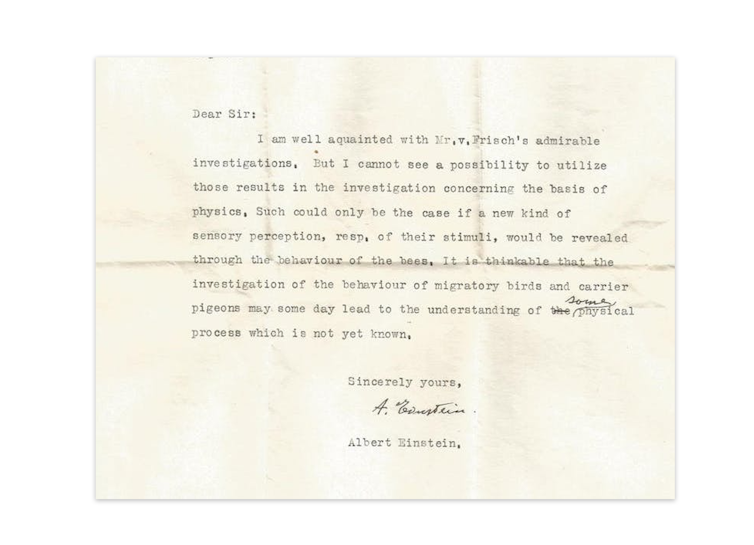
Since the dawn of the electronic age, it has never been easier for researchers to engage with the general public — gaining access to precious resources otherwise unavailable.
This is illustrated perfectly in our latest publication, in which we introduce a previously unknown letter written in 1949 by none other than Albert Einstein. In it, the German-born mathematician and physicist discusses bees, birds and whether new physics principles could come from studying animal senses.
We first came across it in 2019, after Judith Davys — a retiree living in the United Kingdom — read an article we’d published on the mathematical abilities of bees. She reached out to us to share the 72-year-old letter, which Einstein had addressed to her late husband Glyn Davys. We spent a year investigating the precious document.
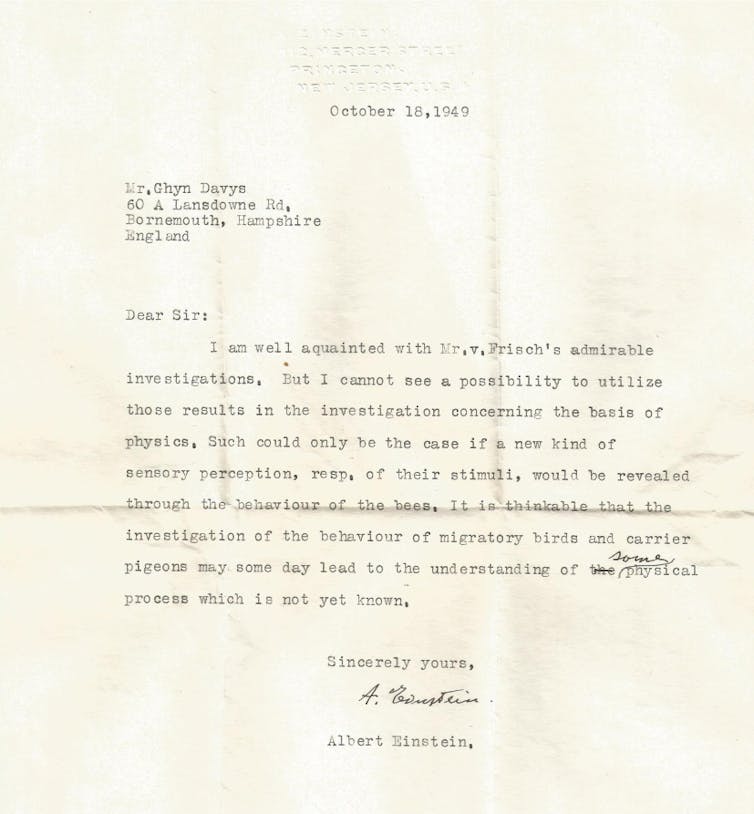
A Key Encounter
Einstein was one of the greatest thinkers of the twentieth century, as well as an excellent communicator. His imagination helped shape many technologies that define the information age today. For example, Einstein’s theory of general relativity governs the large-scale structure of the universe, which in turn enables corrections for the GPS system used on our smartphones.
In 1921, Einstein was awarded a Nobel Prize for his study of the “photoelectric effect”. This effect describes how light can remove electrons from atoms — a principle that underpins the operation of today’s solar cells.
In 1933, Einstein left Germany to work at Princeton University in the United States. It was here, in April 1949, he met scientist Karl von Frisch at a lecture.
Von Frisch was visiting Princeton to present his new research on how honeybees navigate more effectively using the polarisation patterns of light scattered from the sky. He used this information to help translate bees’ now famous dance language, for which he eventually received his own Nobel Prize.
The day after Einstein attended von Frisch’s lecture the two researchers shared a private meeting. Although this meeting wasn’t formally documented, the recently discovered letter from Einstein provides some insight into what may have been discussed.
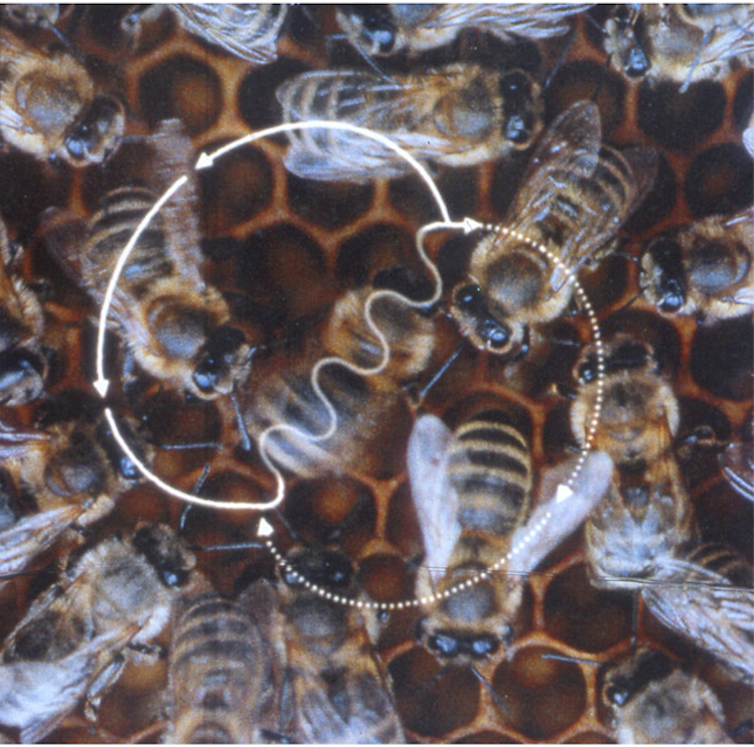
Animal Behaviour From A Physicist’s Lens
We suspect Einstein’s letter is a response to a query he received from Glyn Davys. In 1942, as WWII raged, Davys had joined the British Royal Navy. He trained as an engineer and researched topics including the budding use of radar to detect ships and aircraft. This nascent technology was kept top secret at the time.
By complete coincidence, bio-Sonar sensing had been discovered in bats at the same time, alerting people to the idea that animals may have different senses from humans. While any previous correspondence from Davys to Einstein appears lost, we were interested in what may have prompted him to write to the famous physicist.
So we set out to trawl through online archives of news published in England in 1949. From our search we found von Frisch’s findings of bee navigation were already big news by July of that year, and he had even been covered in The Guardian newspaper in London.
Read more: Bees join an elite group of species that understands the concept of zero as a number
The news specifically discussed how bees use polarised light to navigate. As such, we think this is what spurred Davys to write to Einstein. It is also likely Davys’s initial letter to Einstein specifically mentioned bees and von Frisch, as Einstein responded: “I am well acquainted with Mr. v. Frisch’s admirable investigations”.

It seems von Frisch’s ideas about bee sensory perception remained in Einstein’s thoughts since the two scientists crossed paths at Princeton six months earlier.
In his letter to Davys, Einstein also suggests that for bees to extend our knowledge of physics, new types of behaviour would need to be observed. Remarkably, it is clear through his writing that Einstein envisaged new discoveries could come from studying animals’ behaviours.
Einstein wrote:
It is thinkable that the investigation of the behaviour of migratory birds and carrier pigeons may someday lead to the understanding of some physical process which is not yet known.
Einstein Ideas Seem Right, Yet Again
Now, more than 70 years since Einstein sent his letter, research is indeed revealing the secrets of how migratory birds navigate while flying thousands of kilometres to arrive at a precise destination.
In 2008, research on thrushes fitted with radio transmitters showed, for the first time, that these birds use a form of magnetic compass as their primary orientation guide during flight.
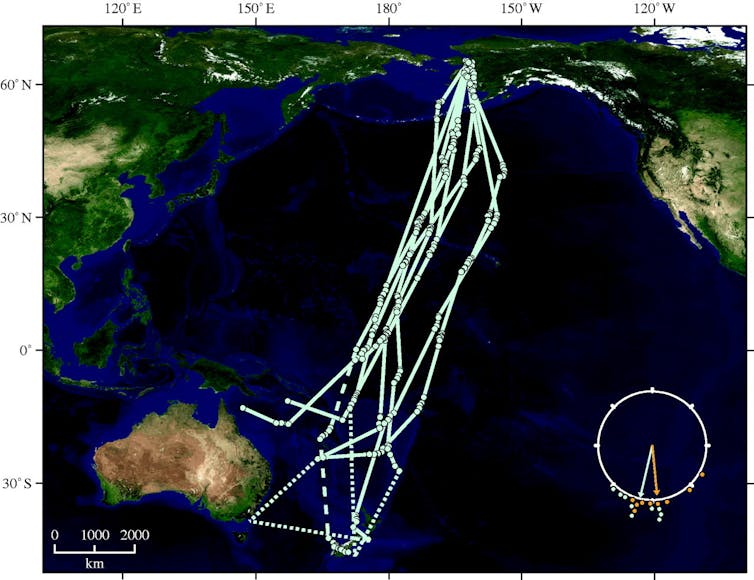
One theory for the origin of magnetic sense in birds is the use of quantum randomness and entanglement. Both of these physics concepts were first proposed by Einstein. But although Einstein was one of the founders of quantum physics, he was uncomfortable with its implications.
“God does not play with dice”, he famously stated, to express his opposition to the randomness which lay at the heart of quantum mechanics.

In an influential 1935 paper, Einstein and co-authors Boris Podolsky and Nathan Rosen introduced the concept of quantum entanglement. Interestingly, it was introduced as a conceptual failure of quantum mechanics, rather than one of its defining centre pieces, as we now understand it.
Perhaps ironically, one of the leading theories for the origin of magnetic sense in birds is the use of quantum randomness and entanglement. This theory suggests radical-pair chemical reactions in cryptochromes — signalling proteins found in certain plants and animals — are affected by the Earth’s magnetic field, and thus form the basis of a bird’s biological magnetic compass.
Although Einstein disagreed with entanglement, his willingness to speculate on how we might learn new things from animal sensory perception suggests he would have been delighted by how new research on bird migration is pushing the boundaries of our understanding of physics.
Indeed, Einstein’s letter to Davys is testament to how open he was to new possibilities for the field of physics being observed in nature. It illustrates, once again, how mindful he was of what one might discover when taking a different view of the world.
Read more: Birds use massive magnetic maps to migrate – and some could cover the whole world ![]()
Adrian Dyer, Associate Professor, RMIT University; Andrew Greentree, Professor of Quantum Physics and Australian Research Council Future Fellow, RMIT University, and Jair Garcia, Research fellow, RMIT University
This article is republished from The Conversation under a Creative Commons license. Read the original article.
Friday essay: searching for sanity in a world hell-bent on destruction

According to The Parable of the Poisoned Well, there once lived a king who ruled over a great city. He was loved for his wisdom and feared for his power. At the heart of the city was a well, the waters of which were clean and pure and from where the king and all the inhabitants drank. But one evening an enemy entered the city and poisoned the well with a strange liquid. Henceforth, all who drank from it went mad.
All the people drank the water, but not the king, for he had been warned by a watchman who had observed the contamination. The people began to say, “The king is mad and has lost his reason. Look how strangely he behaves. We cannot be ruled by a madman, so he must be dethroned”.
The king sensed his subjects were preparing to rise against him and grew fearful of revolution. One evening he ordered a royal goblet to be filled from the well and drank from it deeply. The next day there was great rejoicing among the people, for their beloved king had finally regained his wisdom and sanity.
In his 1955 book The Sane Society, psychoanalyst Erich Fromm suggests nothing is more common than the assumption that we, people living in the advanced industrial economies, are eminently sane. Nevertheless, Australia’s Department of Health reports that almost half of Australians aged 16 to 85 will experience a mental disorder at some point in their lives.
According to Fromm, we are inclined to see incidents of mental illness as individual and isolated disturbances, while acknowledging — with some discomfort, perhaps — that so many of these incidents should occur in a culture that is supposedly sane. Fromm haunts our self-image even today, attempting to unsettle these assumptions of sanity:
Can we be so sure that we are not deceiving ourselves? Many an inmate of an insane asylum is convinced that everybody else is crazy, except himself.
In an age now widely described as the Anthropocene, the conventionally held distinction between sanity and insanity is at risk of collapsing … and taking our civilisation with it.
The Line Shifts Over Time
At least since Michel Foucault’s Madness and Civilization (1961), it has been understood that the idea of (in)sanity is an evolving, socially constructed category. Not only does the medical validity of mental health diagnoses and treatments shift with the times, but what has been judged “sane” in one era has the potential to blur into what is not in another — and without announcement.
This can disguise the fact that social practices or patterns of thought that may once have been considered healthy may now be properly diagnosed as unhealthy. And while this can apply to individual cases, there is no reason to think it should not also apply more broadly to a society at large. A society might go insane without being aware of its own degeneration.
One does not need to be a conspiracy theorist to recognise, with Foucault, that power shapes knowledge. If profits and economic growth are the benchmarks of success in a society, it simply may not be profitable to expose a society as insane, and even members of an insane society may sooner choose wilful blindness than look too deeply into the subconscious of their own culture.
Read more: Explainer: the ideas of Foucault

If our society is not sane — and I find myself pointing towards this thesis — another question follows: what might sanity look like in an insane world?
I come to these questions without mental health training or expertise, but simply as an ordinary member of late-stage capitalist society, one suffering in his own way and trying to understand the mental health burdens that accompany our ecocidal and grossly inequitable mode of civilisation. I make no comment on the very real biophysical causes for mental illness, such as chemical imbalances or physical injury.
Instead, I reflect, at a “macro” level, on the sanity or insanity of the dominant culture and political economy in contemporary capitalist societies such as Australia, asking how the world “out there” can impact the inner dimension of our lives.
Following Fromm’s lead, I inquire not so much into individual pathology, but into what he calls “collective neuroses” and “the pathology of normalcy”. Of course, collective neuroses are not easily observed, for they are, by nature, the background fabric of existence and so easily missed.
Drinking The Kool-Aid
At first, I tried to distil a positive life lesson from the Parable of the Poisoned Well, but I quickly realised this was the wrong way to approach it.
There is arguably no moral guidance in the fable, only an amoral social insight. If there is a lesson, it is that sometimes it is easier or safer simply to conform to common assumptions or practices, no matter how dubious or absurd they are, to avoid being socially ostracised. If you do not go with the flow you may be deemed mad, so it may be better just to blend in and drink the Kool-Aid.
A second reading of the parable points to the relativity of notions of sanity, again suggesting that what’s sane or insane isn’t fixed, but is culturally dependent: a person is sane if they “function” well enough in the society, even if that society is sick.
It is this relativity of sanity that Fromm calls into question in The Sane Society. “The fact that millions of people share the same vices,” he wrote, “does not make these vices virtues, the fact that they share so many errors does not make the errors to be truths, and the fact that millions of people share the same forms of mental pathology does not make these people sane.”
He felt that society needed certain objective conditions to be sane, including environmental sustainability. If too many of humankind’s most basic needs were not being met despite unprecedented capacity, he felt it would be proper to declare a society sick, even if the behaviour producing the sickness was widespread and validated by its own internal cultural logic.
What is “normal” behaviour today? The climate emergency points to our fatal addiction to fossil fuels. We know their combustion is killing the planet, but we can’t help ourselves. The Intergovernmental Panel on Climate Change was established in 1988 to advise us on the science of climate change, yet here we are, more than 30 years later, and carbon emissions continue to rise (excepting only the years of financial crisis or pandemic). We emit 37 gigatons of carbon dioxide into the atmosphere each year, in full knowledge of their impacts.
In 2019, fossil fuels supplied around 85 per cent of global primary energy demand. Driven by a fetish for economic growth, voters support politicians who bring lumps of coal into a parliament for a laugh and enthusiastically build new fossil fuel power stations. It is a tragedy disguised as a grim joke.
Scientists warn that current trajectories of climate heating are not compatible with civilisation as we know it, with potentially billions of lives at risk this century, both human and non-human. You know something is wrong when the Arctic is burning. And yet nothing is more “normal” than hopping into a fossil-fuelled car or consuming products shipped around the world to satisfy the carboniferous desires of affluent society.
We’re deforesting the planet and destroying topsoil to feed a population that is growing by over 200,000 people every day. The United Nations projects we’ll have reached almost ten billion people by mid-century.
This human dominance of the planet under global capitalism is contributing to a holocaust of biodiversity loss, with the World Wildlife Fund recently reporting that populations of vertebrate species have declined by 68 per cent since 1970. We are living through the sixth mass extinction, driven by human economic activity that is not just normal but encouraged, rewarded and widely admired.
Empire marches on like a snake eating its own tail, pursuing growth for growth’s sake — the ideology of a cancer cell.
Unmoored, Lost At Sea
A spiritual malaise seems to be spreading throughout advanced capitalist societies, as if the material rewards of consumerism have failed to fulfil their promise of a happy and meaningful existence. Scholars publish books about it: Robert E Lane’s The Loss of Happiness in Market Democracies, David G Myers’ The American Paradox: Spiritual Hunger in an Age of Plenty, and Clive Hamilton and Richard Denniss’ Affluenza: When Too Much Is Never Enough.
For whom, then, do we destroy the planet? Is a greater abundance of “nice things” what we are lacking in the overdeveloped world? Or is there, as historian and philosopher Lewis Mumford once opined, an inner dimension to our crises that must be resolved before the outer crises can be effectively met?
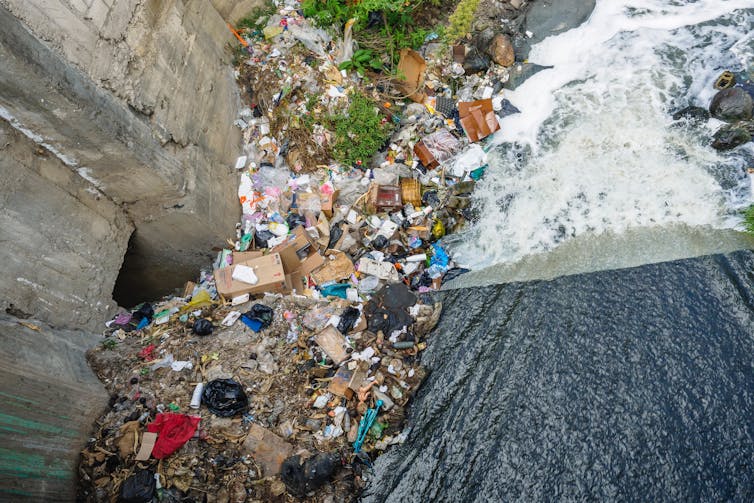
How easy it is to live life regurgitating the prewritten script of advanced industrial society: cogs in a vast machine, easily replaced. Perhaps we see our disenchantment reflected in the eyes of those tired, alienated commuters, a class into which it is so easy to fall simply by virtue of being subjects of the capitalist order. We all know that there is more to life than this.
We find ourselves living in an age where the old dogmas of growth, material affluence and technology are increasingly exposed as false idols. Like a fleet of ships that has been unmoored in a storm, our species is drifting in dangerous seas without a clear sense of direction.
Where are the new sources of meaning and guidance that all societies need to fight off the ennui? Pioneering sociologist Émile Durkheim used the term “anomie” to refer to a condition in which a culture’s traditional norms have broken down without new norms arising that can give sense to a changing world. Perhaps this is the term that best explains our existential condition today.
I am reminded of a poem by Michael Leunig:
They took him on a stretcher
To the Home for the Appalled
Where he lay down in the corner
And be bawled and bawled and bawled.
‘There’s nothing wrong with me,’ he wailed,
When asked about his bawling,
‘It’s the world that needs attention;
It’s so utterly appalling.’
Read more: Friday essay: how many climate crisis books will it take to save the planet?
What Is A Sane Reaction To An Insane Society?
One could go on, but it would be perverse to do so. “Doom porn” is not my business or purpose. But there is a case for diagnosing our society as insane — not as rhetorical strategy, but in the pursuit of literal truth.
If an individual knowingly destroyed the conditions of his or her own existence, we’d question their sanity. If a mother only fed her children if she could make a profit, we’d doubt the soundness of her mind. If a father took all the household wealth and left the rest of the family in destitution while building bombs in the basement that could destroy the neighbourhood, we’d call him psychopathic.
And yet these are characteristics of our society as a whole. Fromm would not permit us to diagnose ourselves and our society as sane just because the actions that produce the features outlined above are considered “normal”. There is a pathology to our normalcy — my own regrettably included — and this pathology is no less pathological just because it is shared by millions upon millions of people.

There are negative mental health effects that might naturally and justifiably arise when otherwise sane people find themselves living in an insane world. The paradox that threatens to emerge has already been variously noted.
In Welcome to the Monkey House, Kurt Vonnegut Jnr writes, “a sane person in an insane society must appear insane”. Thomas Stephen Szasz contends: “Insanity is the only sane reaction to an insane society”. And the British psychiatrist R. D. Laing said insanity was “a perfectly rational adjustment to an insane world”. I think I recall Star Trek’s Dr Spock saying something similar.
How can we not get depressed when reading the newspapers today or watching our politicians go about their business with such confident incompetence? How can we not grieve the wildlife and natural habitat being destroyed each moment? What parent can look to the future and not feel a foreboding dread at what world their children and grandchildren will inherit?
At the same time, and because of that dread, it is hard to maintain the emotional resources to care for strangers or “join a movement” when stress, agitation, worry and busyness clutter our mental lives. This can make society seem like a harsh place, lacking in generosity of spirit or compassion.
Whether it’s from watching white supremacists march or listening to climate deniers speak from platforms in parliament and mass media, a nausea sets in, a sickness not so much of the mind but of the soul.
This is an existential diagnosis, not a medical or psychiatric one. It would be wrong to make peace with this madness. The world we live in should not be treated as normal, and it should not be a sign of good health to become “well adjusted” to a society that is casually practising ecocide, celebrating narcissism, institutionalising racism and assessing the value of all things according to the cold logic of profit maximisation.
Read more: Friday essay: thinking like a planet - environmental crisis and the humanities
It Is Okay Not To Feel Okay
We must not assume behaviour that makes an individual “functional” within a sick society is sufficient evidence of their sanity. In such a society, it is okay not to feel okay, to cry and feel grief, to feel dread and alienation. In our tears, let us find solidarity, for we are not alone.
Remember this when you wake up prematurely in the morning with an anxiety without object, or as you stare at the ceiling late at night as you try to fall asleep. You are not losing your mind. It is precisely because you have a grip on reality that reality seems so out of whack.
On my third reading of the Parable of the Poisoned Well, I noticed something I had missed — it was the watchman, the man who warned the king not to drink the poisoned water the rest of the citizenry had already consumed.
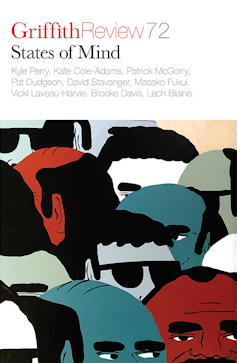
Wanting to quash the revolutionary sentiment, the king succumbed to public pressure and eventually drank from the well in order to fit in. But what about the watchman? Is it possible he never drank the poisoned water and remained sane in an insane society? Did that made him seem mad?
Perhaps my thoughts here are those of a watchman, someone who has tried not to drink the Kool-Aid, who has attempted to resist the pathology of normalcy.
Admittedly, I have questioned my own sanity at times — when, for example, I’ve found myself dancing in the middle of a busy intersection with Extinction Rebellion, risking arrest. What had driven me to act in a way that sees me surrounded by police with batons, guns and pepper spray? They sure looked mad.
Call me crazy, but I’ll finish with the words often attributed to Friedrich Nietzsche: “Those who were seen dancing were thought to be insane by those who could not hear the music”.
This piece is an edited extract, republished with permission from GriffithReview72: States of Mind, edited by Ashley Hay.![]()
Samuel Alexander, Research fellow, Melbourne Sustainable Society Institute, The University of Melbourne
This article is republished from The Conversation under a Creative Commons license. Read the original article.
Has the government rescued the arts in this budget? There are some winners but not much has changed

The arts were in free fall this time last year. COVID-19 restrictions had shut everything down and artists and arts organisations were reeling from a dramatic loss of income, as well as the prospect of a bleak future. Somewhat belatedly, the federal government offered various forms of assistance from late June onwards.
Given the continuing challenges, has the government brought the arts in from the cold in Tuesday‘s budget? The budget statement notes the effects of the pandemic on the creative and cultural sector “have been severe” and the sector “continues to feel the effects of COVID‑19 as social restrictions are eased.”
The budget delivered around $300 million to “help activate and support the successful re‑opening of Australia’s creative and cultural sector”.
It is encouraging the government has admitted to the challenges facing the sector. But has it really come to the rescue with new money, or is it playing with the figures? There are some winners here, but sadly, overall, not a huge amount has changed.
There will be more for the film industry and the Australian Children’s Television Foundation; the Australia Council will receive an extra $5 million on last year’s budget, but this had already been allocated for regional touring of performing arts shows.
National Entities
At the same time, important national entities, such as the National Archives, are ignored. The ABC (funded triennially) will receive an increase of $4.7 million (0.45% of its budget), but will then see its budget decline by 0.85% in 2022-23. Is the government trying to slowly erode the ABC in the longer term?
The Australian Film and Television School will also lose $2.3 million (9.3% of its budget), a sizeable amount for a relatively small operation. Screen Australia, however, receives an increase of $17.9 million (19.5% of its budget). SBS also gets an increase of $13 million (4.4%). However, this SBS funding is also expected to decline after 2021-22.
Read more: Our history up in flames? Why the crisis at the National Archives must be urgently addressed
Old Announcements
Many initiatives in this $300 million have already been announced. The extra $125 million for the arts COVID package RISE was announced in March and we were told on the weekend about an extra $79.9 million for Australia’s national collecting institutions.
There is a new Regional Arts Fund of $3 million for local museums, galleries and historical societies and another fund of $11.4 million for other regional arts activity. In April, Arts Minister Paul Fletcher spoke of a desire to re-allocate arts funding from the city to the regional areas.
A further $10 million has been provided to Support Act, to help musicians and road crew with financial or health problems. They were given $10 million in April 2020 for the same purpose.
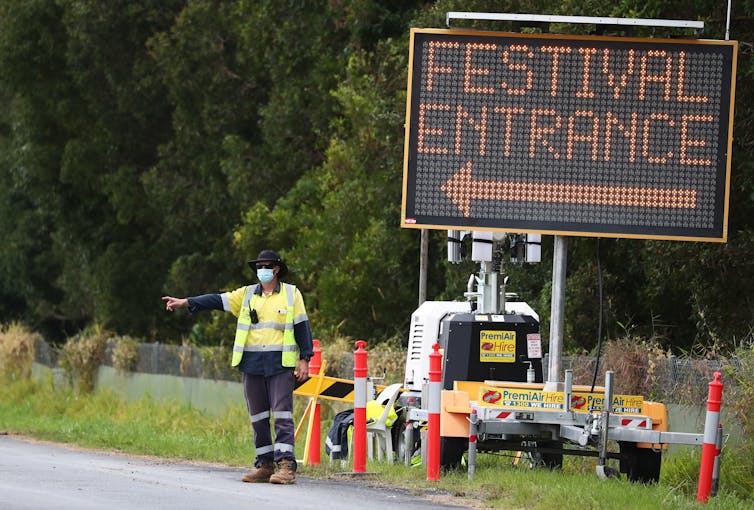
The extra money for national collecting institutions breaks down to
$7.4 million for the Australian National Maritime Museum
$7.1 million for the Bundanon Trust
$11.3 million for the Museum of Australian Democracy at Old Parliament House
$2 million for the National Film and Sound Archive
$34.6 million for the National Gallery of Australia
$9.9 million for the National Library of Australia
$6 million for the National Museum of Australia
$1.6 million for the National Portrait Gallery of Australia.
While $32.4 million of this will go towards delivery of public services and programs, a further $47.5 million is provided for capital works.
The Museum of Australian Democracy at Old Parliament House is a winner here. So too is the Bundanon Trust, which thrives under this government. Perhaps it helps to be located in a marginal seat.
The increase for the National Gallery of Australia is particularly welcome, given in 2020-21 its funding was cut by $7.8 million (or over 9% of its budget). However, out of $34.6 million, most of this ($28.6 million) is for capital maintenance.
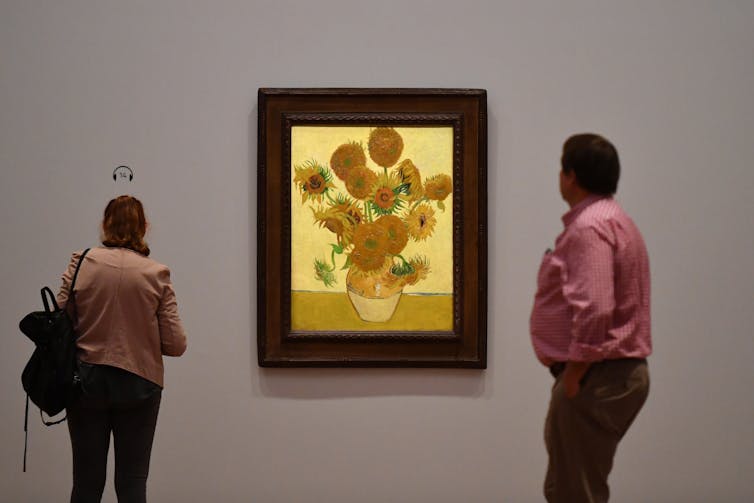
The film sector has received more targeted support; much already announced. In March, we learned $20 million would support independent cinemas across Australia. In April, another $50.8 million was allocated to extend the Temporary Interruption Fund to help restart film production put on hold in 2020. A further $75 million will reinstate the producer offset rate for film, which provides a tax rebate for producers of up to 40% .
An extra $11.9 million will also be given to the Australian Children’s Television Foundation, spread over four years from 2021-22.
What About Individual Artists?
In 2021-22, the Australia Council will receive almost $219.8 million, an increase of around $5 million (or around 2%) on 2020-21 funding. It is described in the budget papers as representing “indexation, net of the applicable annual efficiency dividend, and $3.6 million to provide a non-recurring uplift to the Playing Australia program”.
The RISE Scheme has now had three rounds of funding allocations. By May 2021, $100 million had been allocated (leaving a balance of $100 million to the end of this year). Most funding ($83.4 million) has gone to the performing arts (theatre, music and dance), with $12.6 million for the visual arts, $2.4 million to literature and $1.5 million to film. $25.5 million out of this has been allocated to activities in regional areas.
Individual artists, most disadvantaged by COVID, have continued to receive the least additional support. Sadly, it will be some time before normal arts activity resumes in Australia, especially music concerts or festivals.

While it is encouraging to see the government mention the arts in its budget, given its “disappearing” of the arts over the past two years, it needs to address the whole complex ecosystem of the arts, rather than one or two aspects of it. It also needs to increase funding to the Australia Council so individual artists and small organisations get adequate support.![]()
Jo Caust, Associate Professor and Principal Fellow (Hon), School of Culture and Communication, The University of Melbourne
This article is republished from The Conversation under a Creative Commons license. Read the original article.
ABC's new arts show walks the line between high and low brow — and it works

Review: Art Works hosted by Namila Benson.
Critically discussing art in the contemporary era is like walking across a minefield blindfold while juggling bowling balls and lugging an anvil. So, so many ways to go wrong. Too low-brow and you’re populist. Too hip and you’re elitist. Cleave to the moderate middle and you lose everything that makes art special (when it is special).
Premiering last night, Art Works, hosted by Radio National long-time art show’s host Namila Benson, is ABC TV’s next best attempt to get the formula right. Previous approaches to arts programming include the marathon-like Sunday Arts and the metro-speedy The Mix.
I remember Sunday Arts for its talking head format and endless footage of ballet rehearsals. The Mix had a coffee shop setting and a whizz-bang feel to its cutting that made it unwise to watch on an empty stomach. Both programs freighted deeper messages about art: in the first case, that it is serious and skilled; in the second that it is risky and cutting-edge.
Art Works is a refreshing alternative. Judging by one episode alone it, well, works. What makes the program genuinely innovative is the art actually in it.
Making Introductions
Art Works’ format is straightforward. Over 30 minutes, Benson introduces three artists: actor (and potter, it turns out) Jack Charles, photographer Atong Atem and sculptor Ramesh Nithiyendran. These longer segments are intercut with short grabs of stand-up comedians from the Melbourne Comedy Festival talking about gigs that flopped and whether comedy is an art (answer: yes). There is also the odd fun fact: did you know Brian Eno composed the Microsoft Windows 95 start-up sound … on a Mac?
I say Benson “introduces” these artists because what she doesn’t do is engage them in a long, philosophical debate where the critic’s acumen is on display. Most of the program is the artists talking and, wouldn’t you know it, they are articulate, thoughtful and precise about their art.
Benson herself is a warm and enthusiastic but not overshadowing personality. For someone with purple-black hair, enormous earrings and blue lips and fingernails, she does a good job of blending into the background when she needs to. She has a key skill for a program like this: she can listen.
Art Works aims to be a “new show reframing the way we think about art”. In this episdode at least, it’s the artists doing the reframing. And that feels absolutely right for this moment in time, when artists of all stripes and kinds have been politically forgotten, unless they happen to moonlight wearing a hard hat.
Read more: Remember the arts? Departments and budgets disappear as politics backs culture into a dead end
Art In The Making
The emphasis of the program is on process: artists at work.
Jack Charles was a pottery teacher before becoming an actor, and Benson joins him while he sits at his wheel. Atong Atem is interviewed in her studio, setting up a shoot for Benson, now wearing earrings the size of unstrung tennis rackets. Ramesh Nithiyendran more or less interviews himself, showing his parti-coloured sculptures and paintings.
Sometimes the artists talk about their inspirations and intentions; sometimes about how they create their art; sometimes about their lives and the communities to which they belong.
Diversity is a given. The art scene today just is diverse, and there is no contradiction in Benson saying she will bring viewers “the best of the art world” and the fact there isn’t a national gallery curator or symphony orchestra conductor in sight.
On the other hand, these artists aren’t provocateurs of the sawing-cows-in-half or banana-on-the-wall kind either. As they make perfectly plain, they aren’t against traditional forms. They want to use them for their own creative purposes.
Each of these artists’ work is truly original and engaging. Constructing a program in which we get a taste of that, however briefly, is a step on from the two other common modes of art talk: artist adulation and critical evisceration.
Read more: The sorry part is easy – why true racial diversity in the arts will take more than words
Do Yourself A Favour
For me, watching art programs is too often like seeing someone I knew well while alive laid out on a mortuary slab. I think, “Why talk about art? Why not just go and experience it?”
But my complaints evaporate when artists speak for themselves about what they do and why. In the particularities and complexities of their lives and professions, you get a whiff of what makes art a truly amazing thing in the world, its capacity to offer us what Bertolt Brecht called “complex seeing”.
Art Works has a lively feel to its aesthetic, but not a jump-cutty one. It crosses the art talk minefield adeptly, limbs intact. The proof is that when the episode ended, I immediately called up my 17-year-old art student son and told him to watch it.

Arts Works airs Wednesdays on ABC TV Plus and iView.![]()
Julian Meyrick, Professor of Creative Arts, Griffith University
This article is republished from The Conversation under a Creative Commons license. Read the original article.
New Life In The Sun For A Lady Of The Harbour
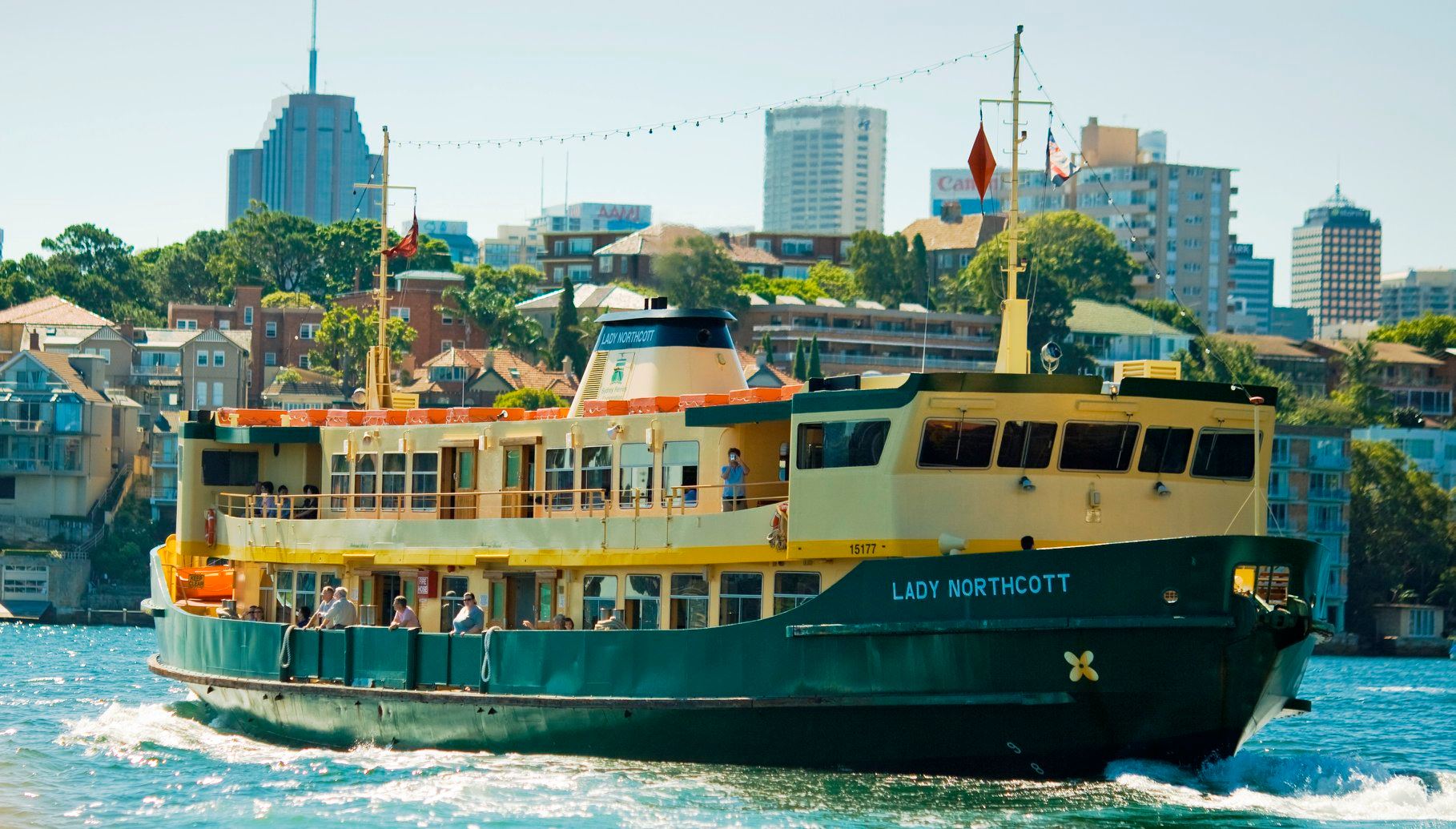
Core strength: why is it important and how do you maintain it?

Many people have become more sedentary in recent times with lockdowns and working from home due to the COVID-19 pandemic.
If you’re moving less, this may have impacted your core strength. Or, you may just be thinking you need to improve it.
So, what exactly is the core? And why is it important to have good core strength?
Read more: Health Check: what's the best way to sit?
What Is The Core?
The core consists of the muscles in your midsection, or torso, surrounding the spine and pelvis. This includes the abdominal muscles at the front, but also muscles within the lower back, and around your sides.
The core muscles are not considered powerful, but they play a fundamental role in stabilising the spine and pelvis. They’re also key to maintaining good posture.
These functions are important to ensure you can move your limbs easily. Your core also protects you against injury — people with a weaker core are more likely to sustain a back injury. Core muscle strengthening is often an important part of rehabilitation after a back injury.
We use our core muscles while performing daily tasks like getting up from a chair, standing, walking, vacuuming and lifting things.
The core muscles are also important for athletic activities like running, jumping, tackling and lifting weights.

Some Signs You Might Need To Work On Your Core
As with other muscles, if we don’t use our core muscles enough, they become weak. When our core becomes weak, our movements are less supported, which can put pressure on other parts of our bodies.
Weakness in the core muscles can be associated with lower back pain, particularly among older people.
Knee pain is another possible sign the core muscles are too weak. Research has shown a core strength training program with physiotherapy has a greater effect on reducing knee pain than standard physiotherapy alone.
If you haven’t been exercising for a while, and you’re experiencing lower back pain or knee pain, it may be a sign your core muscles have become too weak and it’s time to do some work on strengthening them.
The good news is, we can improve core strength with exercise. And there’s no one exercise that is best — you can choose which approach works best for you.
If you do have back or knee pain, or have recently had a baby, consult your doctor or physiotherapist before getting started.
Read more: Thinking about working from home long-term? 3 ways it could be good or bad for your health
How To Strengthen Your Core: Some Exercises You Can Do At Home
While walking and running do involve activating the core muscles to some degree, to really target the core we can look to some specific exercises like the traditional sit-up or stomach crunch. These exercises work well to strengthen the muscles on the front of the torso and carry a very low risk of injury.
Modified versions can enhance the effects. For example, exercising on an unstable surface like a Swiss ball can increase the demands on the muscles.
Think of how much your ankle moves when you stand on one leg, for example. Being in this unstable position forces the muscles of your lower leg to work harder to keep your balance. It’s similar to the way your muscles tighten up when you’re walking on a slippery surface.
So, when you do sit-ups while sitting on a Swiss ball or a BOSU ball (the shape of a half sphere, like in the picture below) you find you must engage your core muscles to stay on the device. This increases the intensity of the exercise.

The traditional crunch or sit-up predominantly work the muscles at the front of the torso, the rectus abdominis, commonly known as the abs.
A standard plank is also good for your abs, and engages other muscles of the torso as well. And you can engage the core muscles at the side of the torso, called the obliques, even further with a side plank.
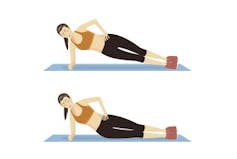
You can also try getting into a push up position and raising one leg at a time from the hip while keeping the knee straight.
You can make this more challenging by raising the opposite arm at the same time, so your only points of contact are the ball of one foot and the other hand.
This is a good workout for your core, which is working hard to keep you in position. You can make it easier by doing this on hands and knees.
Any exercise that activates the core muscles more than usual will help improve core strength. Sit-ups, crunches and planks will target these muscles directly, and adding unstable surfaces like Swiss balls can enhance the activation.
But remember, other types of physical activity, like going for a jog or doing squats, can help your core strength too.
Read more: How much do sedentary people really need to move? It's less than you think ![]()
Andrew Lavender, Senior Lecturer, School of Science, Psychology and Sport, Federation University Australia
This article is republished from The Conversation under a Creative Commons license. Read the original article.
Shrill, bossy, emotional: why language matters in the gender debate
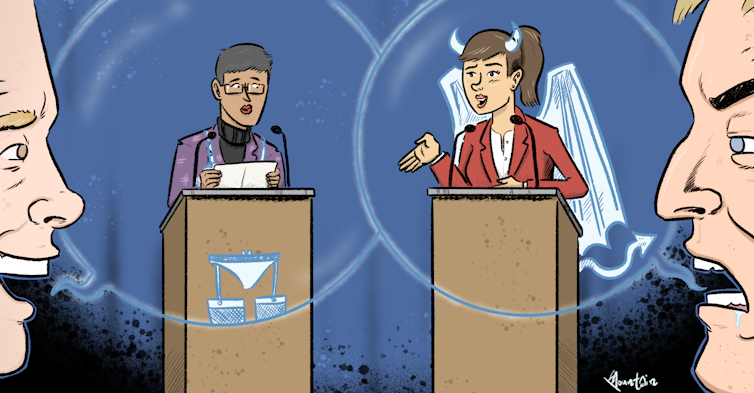
There has been much debate recently about the way women who work in our federal parliament are treated. This discussion has highlighted that society continues to place very different values on the way women and men behave.
Language – as a behaviour – holds a mirror up to these values. And changing the way we think about language is an important step toward changing the way we think about gender.
Smoke-And-Mirror Fixes For Folksy Sneer Winces
Folk wisdom provides a dizzying array of misleading accounts of how women communicate, many of them riddled with sexism. Proverbs tell us “women’s tongues are like lambs’ tails; they are never still”. But research tells us men talk and interrupt more – especially when they’re speaking to women.
It’s hard to stop the proverb and folk juggernaut once it gets started. It’s much easier to tell tales. And these are tales of linguistic problems, particularly for women in the workplace. Descriptions like “shrill”, “hysterical”, “scold”, “emotional” – the list goes on – speak to the wider truth that women’s language is policed more aggressively and condemned more readily than men’s.
British TV producer Gordon Reece reputedly mused “the selling of [former UK prime minister] Margaret Thatcher had been put back two years” with the broadcasting of Question Time, as “she had to be at her shrillest to be heard over the din”.
More recently, Donald Trump said Hillary Clinton’s raised voice made her sound “shrill” and “too much”. And, of course, closer to home, Tony Abbott called Prime Minister Julia Gillard “shrill and aggressive”. Gillard suffered an onslaught of criticism for her accent and non-standard English, whereas Bob Hawke was celebrated for his.
Australian linguist Lauren Gawne also pointed to other features condemned in Gillard’s language, including sentence-final prepositions, passive voice and over-abundant adverbs. These are all features widely used by other politicians, and indeed by English speakers generally.

Sadly, the response to linguistic judgments seems to be a desire to “fix” women’s language. All kinds of advice literature instruct on how to replace these undesirable ways of speaking and writing with better ones.
Thatcher is probably the best-known example of someone who underwent a complete linguistic makeover. She famously altered her accent and her delivery and deepened her voice by nearly half the average difference in pitch between male and female voices.
In 2015, a Gmail plug-in (Just Not Sorry) was developed largely with women in mind. Like a grammar or spell checker, it highlighted for correction such features as hedging expressions like just, I think and sorry. The development of the Just Not Sorry plug-in was well-intentioned — it emerged from a networking event at which women worried words like these made them look like pushovers.
But quick fixes like the Just Not Sorry plug-in don’t engage with the broader issue that society shouldn’t be policing women’s language. Moreover, it doesn’t stop to consider that so-called women’s conversational styles — found in many studies to be more co-operative, polite and collaborative — might lead to better outcomes in the workplace.
Baronet, King Kong And The Dame In The Creek: What Words Tell Us About Society
“Shrill” hints at an English lexicon that does not reflect kindly on women. A lexicon is not an inanimate beast, but rather a social one. The social beast shines through in this Australian schoolyard chant:
Boys are strong,
like King Kong,
Girls are weak,
chuck ’em in the creek.
And the Oxford English Dictionary entry for “sex” highlights the corresponding linguistic imbalance. Here women are referred to as the “weaker”, “fairer”, “gentler” and “softer” sex, while men are the “stronger”, “sterner”, “rougher” and “better sex”. However, we might mention on an optimistic note that the adjectives associated with men are now listed as “rare”.
Synonym dictionaries like thesauruses are also revealing. The entry under “woman” shows an abundance of expressions for a sexually active or available woman. Many are appallingly derogatory.
The comparable set under “man” is considerably smaller and noticeably less negative. Labels like “rake” or “womaniser” have nothing of the same pejorative sense of sexual promiscuity — there’s nothing equivalent to “whore” or “slut”.
What has given rise to this imbalance is the fact that words referring to women are unstable and typically deteriorate with time. Words like “lady” or “dame” show the mildest form of deterioration. These referred to persons in high places but then became generalised — compare the stability of the once comparable “lord” and “baronet”, and others such as “governor”, “master”, “sir” versus “governess”, “mistress”, “madam”.
Even more striking is the way words meaning simply “young woman” take on negative connotations. Some expressions even start off referring to males, but once they narrow to female application they are quick to take on overtones of sexual immorality. This is true not just of old expressions like “whore”, “slut” and “slag” — in the case of Modern English’s “bimbo” and “skank”, the changes were extremely rapid.
Sissy Pricks And Twatty Prats: Insults And Gender
While we’re on the subject of asymmetries, we might also point out the vast difference in wounding capacity between insults invoking male and female sex organs. The most striking is “cunt”, meaning “nasty, malicious, despicable”, versus “prick” meaning “stupid, contemptible, annoying”.
Moreover, while “cunt” (and its gentler counterparts “twat” and “prat”) freely apply to both males and females, females are rarely, if ever, abused by “prick” and “dick”. Should women be concerned by this, you’re probably wondering? Only in that it’s indicative of a more general story. Terms for women are insulting when used of men (for example, “throws like a girl”, “old woman”, “sissy”), but there’s no real abuse if male-associated words are used of women. In fact, “she’s ballsy” was said of Thatcher in praise of her strength of character.
Language Is A Mirror And A Lens
Our language behaviour — perhaps best illustrated by the lexicon — provides particularly clear windows into speech communities. If you’re not convinced already, consider the staggering 2,000 expressions for “wanton woman” that English has amassed over the years. This says it all really: a linguistic tell-tale of sexual double standards. Even the adjective “wanton” no longer refers to men.
These asymmetries in our language are significant, and we haven’t even started on the maledictions invoking animal terms! Language both reflects and reinforces the thoughts, attitudes and culture of the people who use it, and that’s why language matters when it comes to talking about gender.![]()
Kate Burridge, Professor of Linguistics, Monash University and Howard Manns, Lecturer in Linguistics, Monash University
This article is republished from The Conversation under a Creative Commons license. Read the original article.
Sydney's Newest Metro Stations Announced
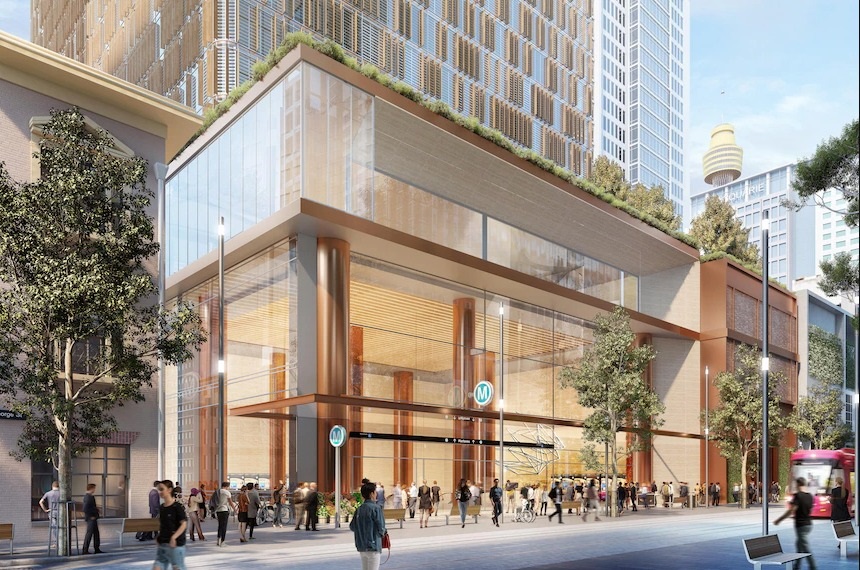

- 12 minutes faster from Burwood North to North Sydney (Victoria Cross metro station) return - about 20 minutes (with interchange) using Sydney Metro, compared to about 32 minutes now (with interchange);
- Save 32 minutes a day from Castle Hill to Pyrmont - about 42 minutes (with interchange) using Sydney Metro compared to about 58 minutes now (with interchange);
- 14 minutes faster from Blacktown to Sydney Olympic Park - about 20 minutes (with interchange) using Sydney Trains and Sydney Metro compared to about 34 minutes now (with interchange).
New Strep A Human Challenge Model Paves The Way To Test Vaccines Against The Deadly Bacteria
Chill Out: Advanced Solar Tech Runs Cooler And Lasts Longer
New Gauge On Weather Forecasts; Novel Patterns Found In Australia's Climate Extremes
Boosting Body Heat Production: A New Approach For Treating Obesity
Disclaimer: These articles are not intended to provide medical advice, diagnosis or treatment. Views expressed here do not necessarily reflect those of Pittwater Online News or its staff.